8 World War II
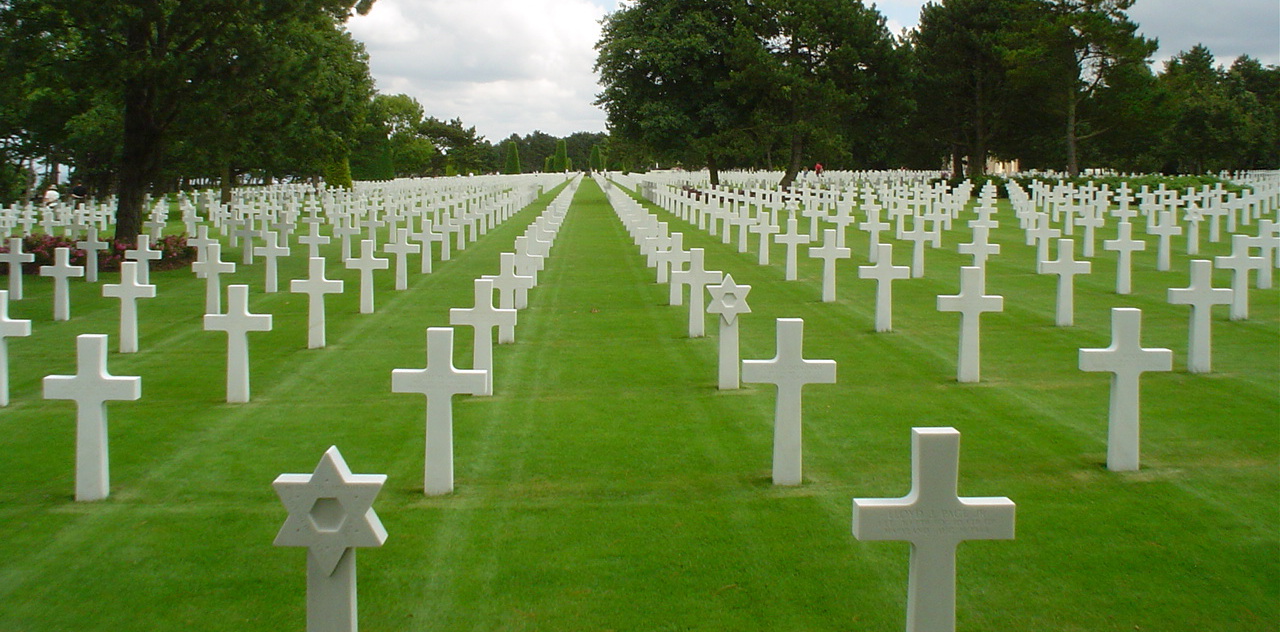
The transition from the 1930s to the 1940s did not provide an opportunity for the global economy to recover gradually. The global economic crisis gave way to a global war that became the deadliest and most destructive in human history. Up to eighty-five million people lost their lives during World War II, or about 3% of the world population. The war included industrialized genocide and unleashed the most destructive technology ever used in war. When it ended, the United States stood alone as the world’s superpower.
Origins
Although we typically think of World War II from the perspective of United States involvement beginning in 1941, America came late to the conflict, as it had in World War I. The European war began in 1939 when Germany invaded Poland after signing a non-aggression treaty with the Soviet Union defining the Baltic states as a Russian sphere of influence and then annexing Poland. Germany invaded Poland from the west on September first and its (temporary) ally the U.S.S.R. invaded from the east on the seventeenth. Britain and France declared war on Germany on September third, but once again it would be a couple of years before the U.S. joined its allies against Hitler, and when they did they would have the U.S.S.R. on their side too. Although the Soviets were equally at fault for annexing Poland, they invaded after the allies had already declared war on Germany. And by the time the U.S. entered they war, Hitler had betrayed Stalin and invaded the Soviet Union.
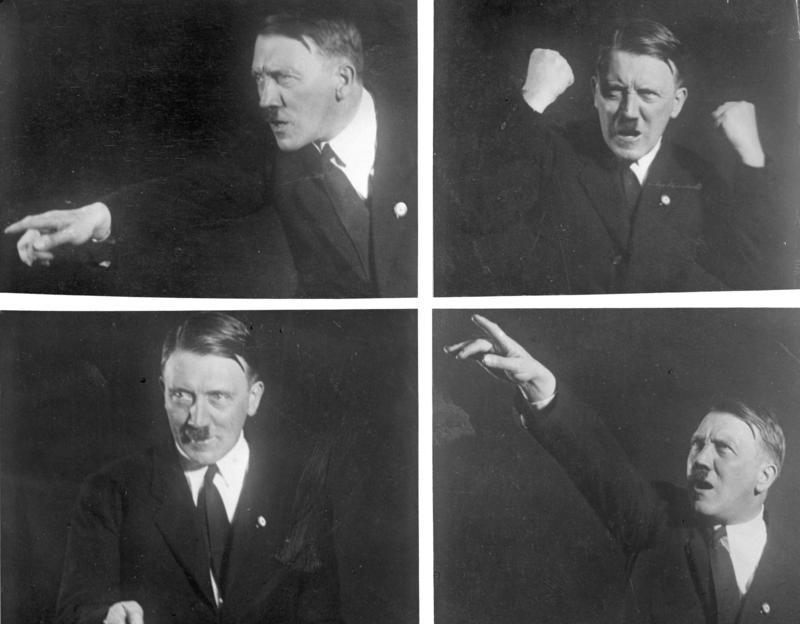
Austrian native Adolf Hitler had served in the German Army in World War I. After the war he joined the German Workers Party and by 1921 he was leader of a new National Socialist German Workers’ (or Nazi) Party. Hitler and the Nazis failed to take over the German government in a coup in 1923 and Hitler was sentenced to five years in prison. He served only nine months of this sentence, but while in prison he composed Mein Kampf (My Struggle), a semi-autobiographical manifesto that was published in two volumes in 1925 and 1926. Hitler attacked the Treaty of Versailles and promoting German nationalism. By 1932 the Nazis controlled the most seats in the Reichstag parliament and Hitler became chancellor in 1933. The Nazi Party rapidly transformed the Weimar Republic into a single-party state with Hitler as Führer (leader). Military oaths of allegiance were changed so that soldiers pledged themselves to Hitler personally rather than to the state or its officials. Hitler based his program of absorbing regions with German-speaking populations into his Reich on the need to create Lebensraum (living space) for the people, and many Nazi programs were justified by populist claims they supported German workers. Populist propaganda also focused on blaming others for Germany’s problems, especially the victors of the first World War still collecting excessive reparations payments and an imagined international Jewish conspiracy.
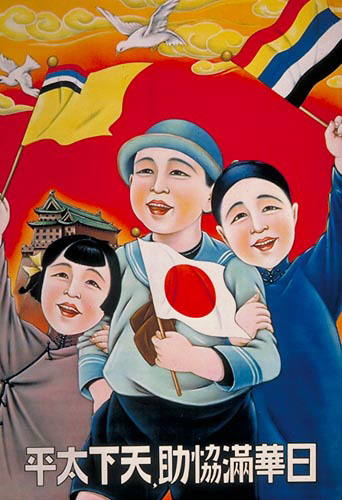
The Nazis in Germany found ready allies in the Fascist dictatorship of Mussolini in Italy and both leaders supported the dictator Francisco Franco in the Spanish Civil War, which began in 1936. In Asia, the government ruling in the name of Japanese Emperor Hirohito had shifted toward fascism even earlier with an invasion of Manchuria in 1931 and had established a puppet state called Manchukuo in northeastern China and Inner Mongolia. Rapid industrialization had turned Japan into a major regional manufacturer and Japanese zaibatsu such as Mitsubishi, Mitsui, and Sumitomo required increasing supplies of raw materials that were not available on the islands of Japan. Ideologically, the Japanese justified their conquests by claiming they were liberating Asia from European colonialism. Not all the Asian countries they invaded, however, were happy to become part of the Pan-Asian empire Japan wanted to rule over.
Japan invaded China itself in July 1937, two years before Germany invaded Poland. Chinese attention had been focused on a civil war between the Republic of China and the Chinese Communist Party since 1927 and the Chinese leader Chiang Kai-shek had ignored the Japanese threat until it was too late. Chiang appealed to the League of Nations for assistance against Japan. The United States supported the Chinese protest and after a six-month investigation, the League found the Japanese guilty and demanded they return Manchuria to China. The diplomats of the League had no way to enforce their ruling, of course. Japan ignored the demands and simply withdrew from the League of Nations. Japanese diplomatic isolation empowered radical military leaders who could point to Japanese military success in Manchuria and compare it to the diplomatic failures of the civilian government. The military took over Japanese foreign policy. In the military’s eyes, the conquest of China would not only provide for Japan’s industrial needs, it would secure Japanese supremacy in East Asia.
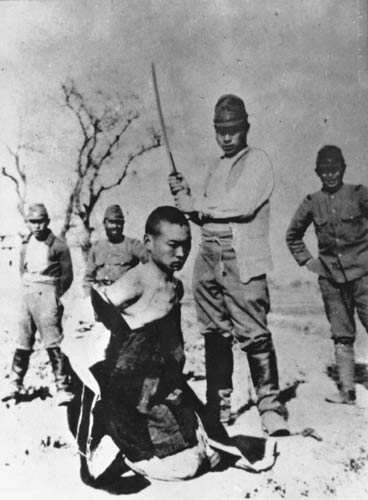
Japan launched their full-scale invasion of China on July 7, 1937 and routed the forces of the Chinese National Revolutionary Army led by Chiang Kai-shek. The broken Chinese army surrendered Beijing to the Japanese on August 8, Shanghai on November 26, and the capital, Nanjing, on December 13. In the first six weeks after capturing the capital, Japanese troops killed half of the city’s population of 600,000. They began with 90,000 Chinese Army POWs whom they despised for surrendering, and then moved on to civilians. Japanese troops raped up to 100,000 women and girls and then shot or bayonetted most of them in what is now recognized as one of the worst atrocities of WWII. To pacify the rest, the Japanese distributed opium and heroin to the captive population. Hoping to slow the invading enemy, Chiang Kai-shek adopted a scorched-earth strategy of “trading space for time.” His Nationalist government retreated inland, burning villages and destroying dams, and established a new capital at the Yangtze River port of Chungking. Although the Nationalists’ scorched-earth policy did slow the Japanese military’s advance, it alienated Chinese civilians and became a powerful propaganda tool for the Chinese Communist Party. News of the “Rape of Nanjing” reached the West, but many were skeptical because the violence was so extreme. However, as hundreds of eyewitness accounts written by westerners were published in American newspapers, the magnitude of the Japanese atrocities began to sink in. But no one in the U.S government was going to propose declaring war on Japan to save the Chinese.
Americans read about the brutal fighting in China, but the United States lacked both the will and the military preparedness to oppose the Japanese invasion. After the carnage of World War I, many Americans had retreated into isolationism and opposed any involvement in Europe and Asia. The Republican presidents and congresses of the 1920s fundamentally disagreed with Woodrow Wilson’s vision of America as the world’s policeman. And even if Americans had wanted to intervene, their military was lacking. The Japanese army was a technologically advanced force consisting of 4,100,000 men and 900,000 Chinese collaborators, all armed with modern rifles, artillery, armor, and aircraft. By 1940, the Japanese navy was the third-largest and because of its newness, possibly the most technologically advanced in the world. Still, Chinese Nationalists lobbied Washington for aid. Chiang Kai-shek’s wife, Soong May-ling, known to Americans as Madame Chiang, led the effort. Born into a wealthy Chinese merchant family, Madame Chiang had spent much of her childhood in the United States and had graduated from Wellesley College in 1917 with a major in English literature. In contrast to her gruff husband, Madame Chiang was charming and able to use her knowledge of American culture and values to build support for her husband and his government. But while the United States denounced Japanese aggression, it took no action. And as the Nationalists fought for survival, the Chinese Communist Party was busy accumulating supporters and supplies in the northwestern Shaanxi Province. An ambitious young commander named Mao Zedong recognized the power of the Chinese peasant population and began recruiting from the local peasantry, building his force from a meager seven thousand survivors at the end of the Long March in 1935 to 1.2 million members by the end of the war.
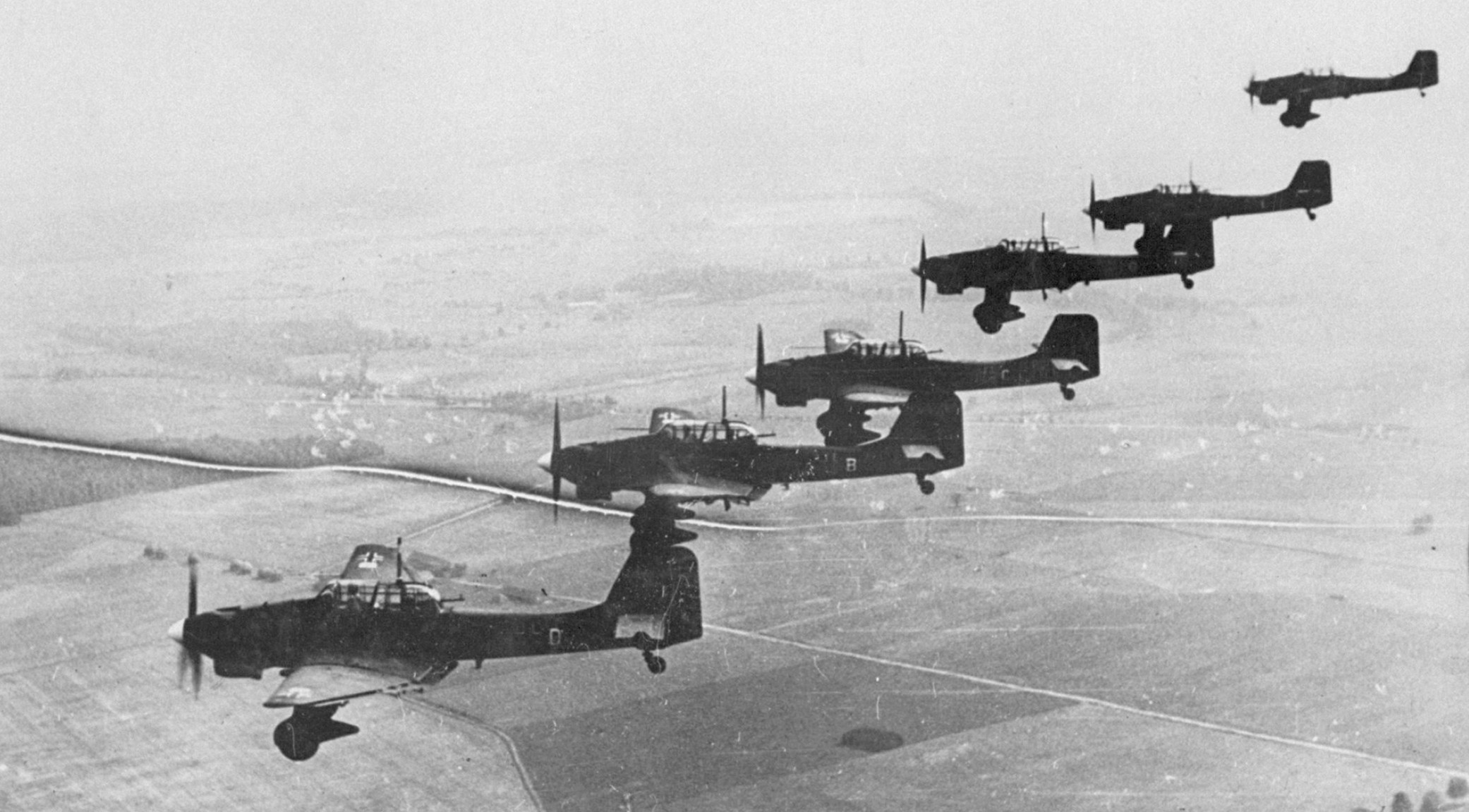
Blitzkrieg
With a war in Asia already raging, Europe too fell into conflict. On taking power in Germany, the Nazis under Hitler had repudiated both the reparations payments required by the Treaty of Versailles and the ban on rebuilding German military power. In 1938, Germany annexed Austria and set its sights on the Sudetenland, a large, ethnically German area of Czechoslovakia. Britain and France, alarmed but still anxious to avoid war, agreed that Germany could annex the region in return for a promise to stop all future German aggression. They hoped and may have believed that Hitler could be appeased, but it soon became clear that his ambitions would continue pushing German expansion. The German Wehrmacht invaded Poland on September 1, 1939. Britain and France declared war two days later and mobilized their armies. The allies hoped that the Poles could hold out for three to four months, enough time for them to intervene. Poland fell in three weeks, partly due to the Russian invasion in the east and partly due to a new form of warfare. The German army, anxious to avoid another rigid, grinding war of stalemate and attrition they had experienced in the trenches of World War I, built a new modern army for speed and maneuverability. The new German strategy used tanks, planes, and motorized infantry to concentrate forces, smash front lines, and wreak havoc behind the enemy’s defenses. It was called Blitzkrieg, or lightning war.
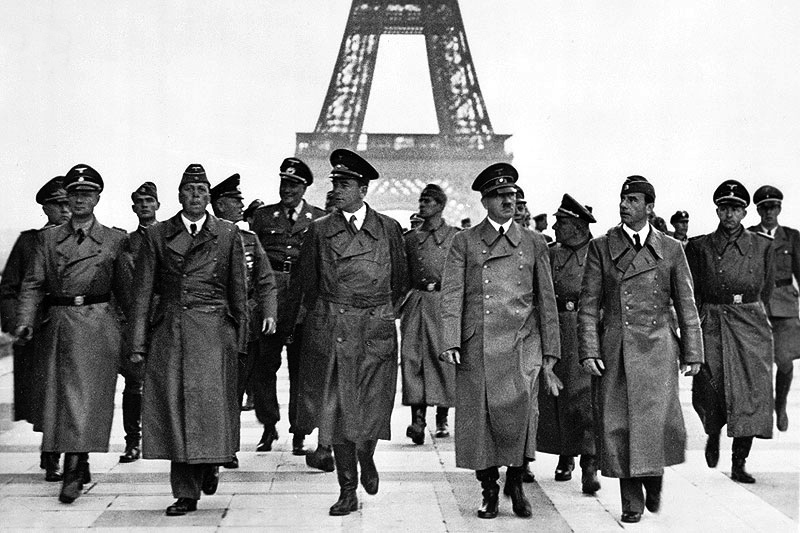
After the fall of Poland, France and its British allies braced for an inevitable German attack. In May 1940, Hitler launched his campaign into Western Europe through the Netherlands and Belgium to avoid the Maginot Line, a prepared defense along the French-German border. Poland had fallen in three weeks; France lasted only a few weeks more. By June, Hitler was posing for photographs in front of the Eiffel Tower. In another propaganda victory, Hitler made French diplomats sign their surrender in the same railroad car that had been used for the German surrender in the first World War. Germany split France in half, occupying the north and creating a puppet government in Vichy to govern the south. With France under control, Hitler turned his attention to conquering Great Britain. Operation Sea Lion, the German invasion of the British Isles, required air superiority over the English Channel. From June until October the German Luftwaffe fought the British Royal Air Force (RAF) for control of the skies. Despite having fewer planes, British pilots won the so-called Battle of Britain, saving the islands from invasion and prompting the new prime minister, Winston Churchill, to declare, “Never before in the field of human conflict has so much been owed by so many to so few.”
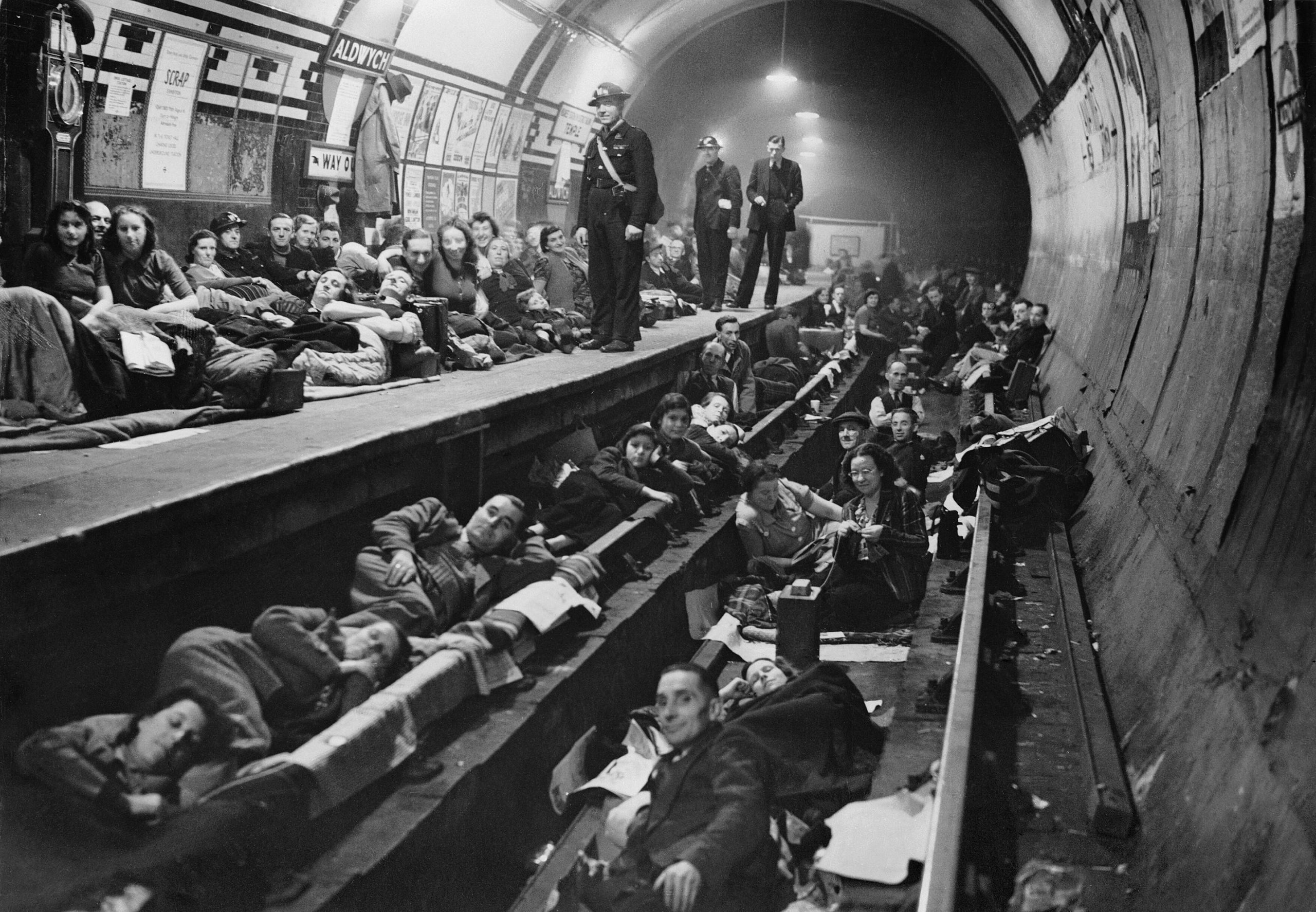
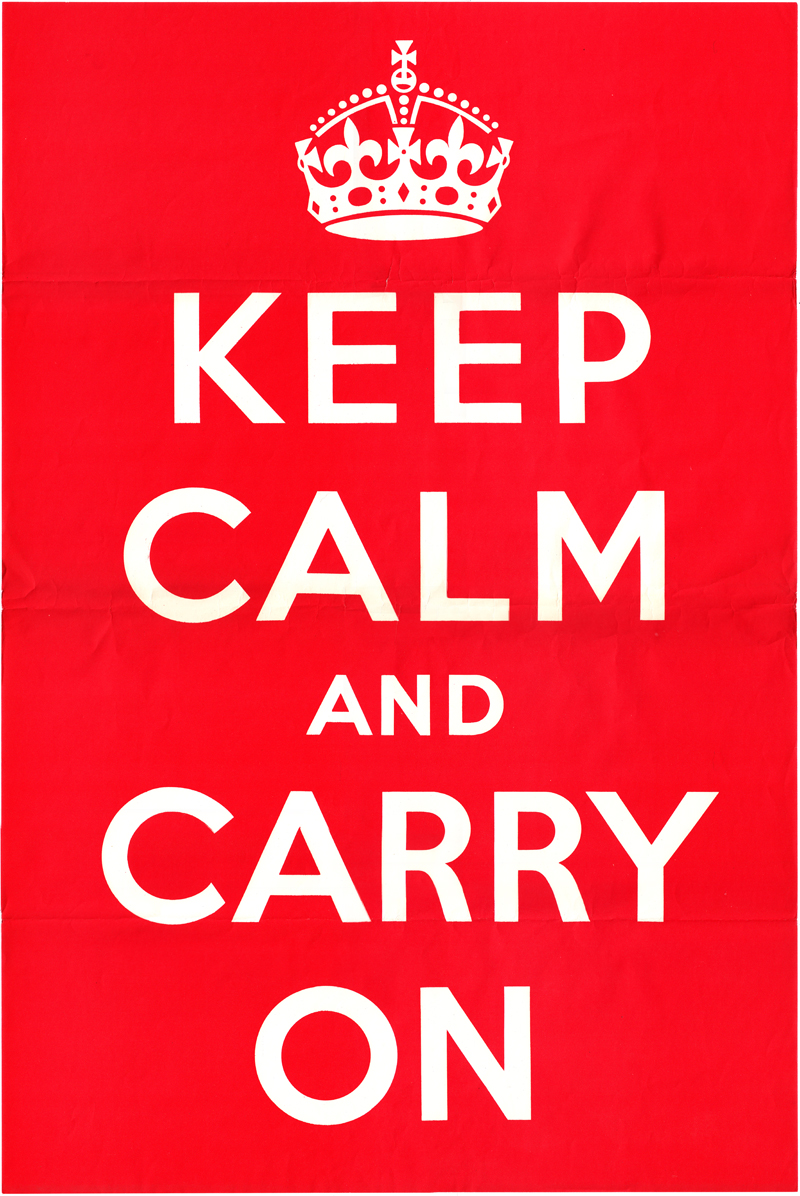
But if Britain was safe from invasion, it was not immune from additional air attacks. Frustrated by the Battle of Britain, Hitler began a bombing campaign against cities and civilians. The Blitz, as the British called the nightly bombing raids on London, killed at least 40,000 civilians. Population centers like Bristol, Cardiff, Portsmouth, Plymouth, Southampton and industrial cities like Swansea, Belfast, Birmingham, Coventry, Glasgow, Manchester, and Sheffield were also targeted for heavy bombing. The Royal Air Force defended the cities as well as they could, and British industrial production which had been moved out of major cities was unaffected by the air attacks. The British people, encouraged by Churchill, kept calm and carried on. In anger, Hitler and his Vice Chancellor Herman Göring began a policy of hitting London every day to try to break the will of their enemy. Beginning on September 7, 1940, the city was bombed every night for 56 days, including a large daylight attack on September 15. British morale failed to break, and Germany eventually shifted to targeting Atlantic shipping and bombing port cities in an attempt to starve the British into submission. When the port of Clydebank in Scotland was bombed in March, 1941, only 7 of 12,000 houses escaped damage. But the Germans failed to gain complete air superiority, partly due to the new technology, RADAR (Radio Detection and Ranging), deployed by the British. RADAR had been developed in the 1930s and then perfected by Britain in the early 1940s and offered to the Americans in exchange for financial and industrial support.
Operation Barbarossa
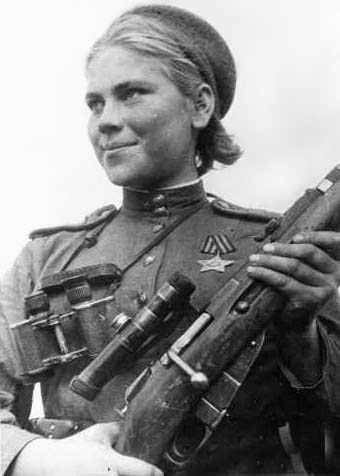
Hoping to capture agricultural lands and oil fields to support his war effort, Hitler broke his 1939 nonaggression pact with Stalin and committed Germany to another two-front war in June 1941 when he invaded the Soviet Union. Operation Barbarossa was the largest land invasion in history. France and Poland had fallen in weeks and Germany hoped to use the same Blitzkrieg tactics to break Russia before the winter. The German military caught the Red Army unprepared and quickly captured enormous swaths of land and hundreds of thousands of prisoners. But the U.S.S.R. was just too big. After recovering from the initial shock of the unexpected German invasion, Stalin moved his factories east of the Urals into Siberia, out of range of the Luftwaffe. He ordered his retreating army to destroy food, rails, and shelters to slow the advancing German army. The Germans split into three forces and advanced to the gates of Moscow, Stalingrad, and Leningrad, but their supply lines stretched thousands of miles. Soviet infrastructure had been destroyed, partisans harried German lines, and then the brutal Russian winter arrived. Germany had won massive gains but when winter arrived, German troops were exhausted and overextended. In the north, the German army starved a million and a half people in Leningrad to death during an 827-day siege that has been called a genocide. In the south, at Stalingrad, the two armies bled themselves to death in the destroyed city; fighting house to house in a five-month battle that killed nearly two million people on both sides. In the center, on the outskirts of Moscow, the German army faltered and fell back after a three-month battle that killed a million people. It was the Soviet Union that broke Hitler’s army. At least twenty-five million Soviet soldiers and civilians died during what Russians call the Great Patriotic War, and roughly 80 percent of all German casualties during the war came on the Eastern Front. Although German armies remained trapped until their defeat in Stalingrad in February 1943 and in Leningrad until January 1944, by December 1941 Germany had lost the war in the East and had begun its long retreat.
The U. S. and the European War
While Hitler marched across Europe, the Japanese continued their war in the Pacific. In 1939 the United States dissolved its trade treaties with Japan and the following year America cut off supplies of war materials by embargoing oil, steel, rubber, and other vital resources. In response, Japan’s resource-challenged military launched invasions across the Pacific to find resources for its war effort. The Japanese called their new empire the Greater East Asia Co-Prosperity Sphere and, with the slogan of “Asia for the Asians,” made war against European colonial possessions and independent nations throughout the region. Diplomatic relations between Japan and the United States collapsed. American diplomats demanded that Japan withdraw from China. For its part, Japan considered the oil embargo a declaration of war.
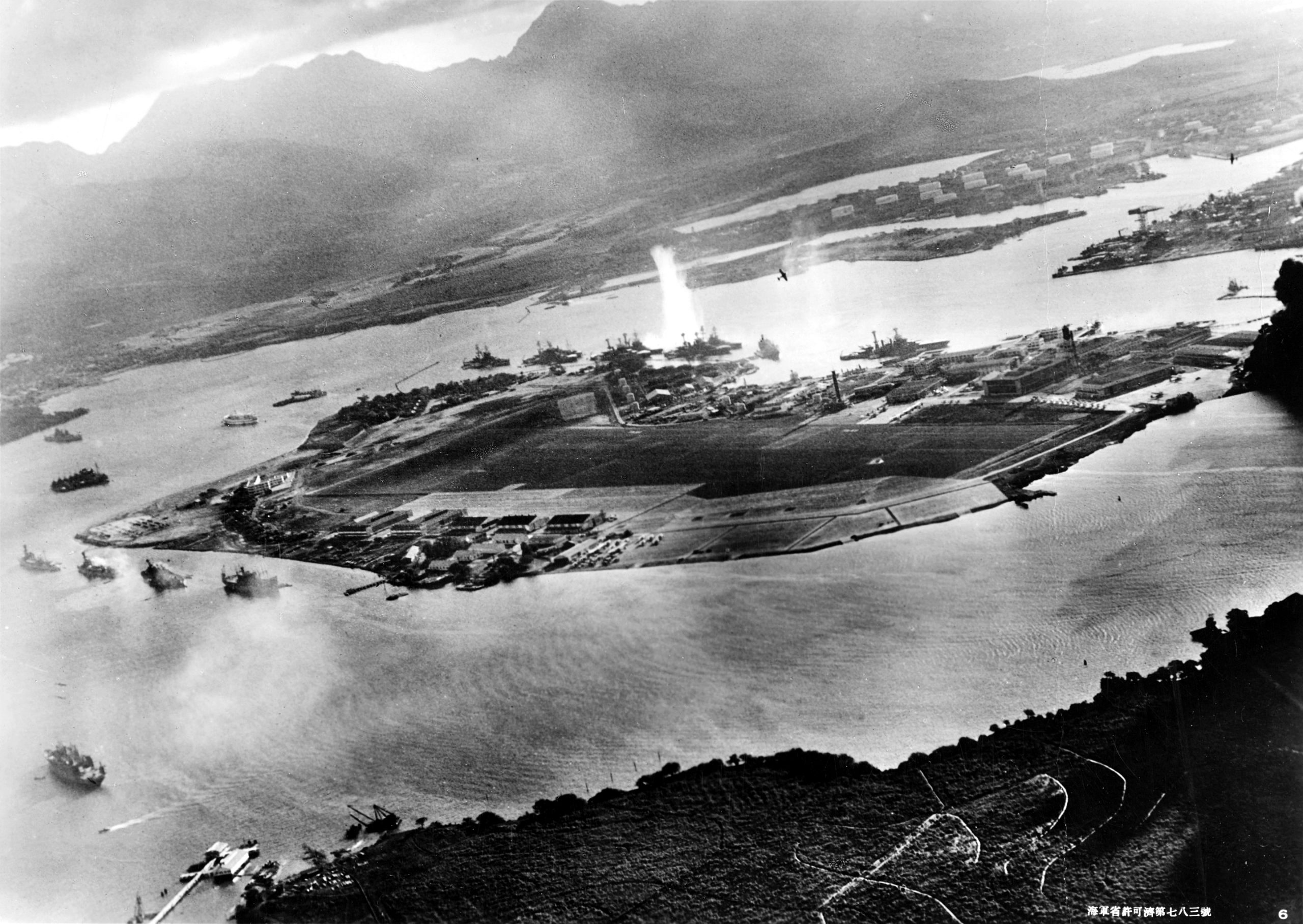
Japanese military planners, believing that American intervention was inevitable, launched a coordinated Pacific offensive to neutralize the United States and other European powers and provide time for Japan to complete its conquests and fortify its positions. On the morning of December 7, 1941, the Japanese made a surprise attack on the American naval base at Pearl Harbor, Hawaii. The Japanese hoped to destroy enough battleships and aircraft carriers to cripple American naval power for years. In a surprise attack beginning at 7:48 AM, the Japanese destroyed or seriously damaged eight battleships (four sank), three cruisers, three destroyers, and 180 aircraft, and killed 2,403 American servicemen and wounded another thousand. 353 Japanese bombers, fighters, and torpedo planes wiped out nearly the entire US Pacific Fleet at Pearl Harbor.
American isolationism ended at Pearl Harbor. Japan also assaulted the Philippines and other American holdings throughout the Pacific, but it was the attack on the US territory and naval base in Hawaii that threw the United States into the global conflict. Franklin Roosevelt called December 7 “a date which will live in infamy” and asked for a declaration of war, which Congress approved within hours. The US declared war on Japan the following day, and Germany and Italy declared war on America on December 11th. Within a week of Pearl Harbor the United States was at war with the entire Axis, turning two previously separate conflicts into a true world war.
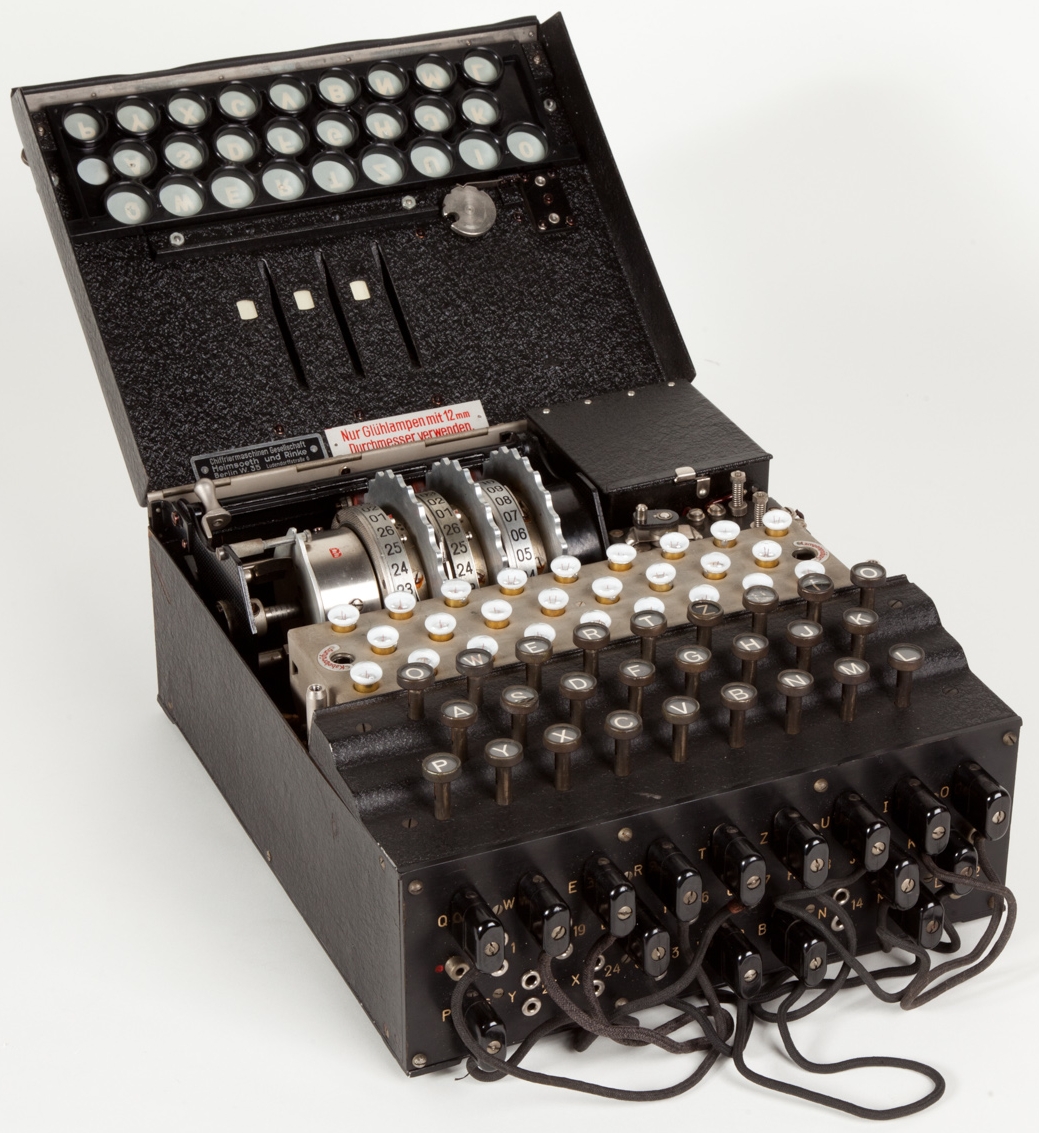
Although it had not been a combatant, the United States had provided financial and material support to its allies from the war’s start, as it had previously done in World War I. Britain stood alone militarily in Europe, but American supplies had bolstered their resistance. When Hitler unleashed U-boat “wolf packs” into the Atlantic Ocean with orders to sink anything carrying aid to Britain, British and the United States tactics and technology won the Battle of the Atlantic. British code breakers at Bletchley Park led by Alan Turing cracked Germany’s Enigma radio cryptography. The surge of intelligence, code-named Ultra, combined with naval convoys escorted by destroyers armed with sonar and depth charges, gave the advantage to the Allies. By 1942, Hitler’s navy was losing ships faster than they could be built.
In North Africa in 1942, a British victory at El Alamein began slowing the German advance. In November, the first American combat troops entered the European war, landing in French Morocco and pushing the Germans east while the British pushed west. By 1943, the Allies had forced Axis troops out of Africa. In January President Roosevelt and Prime Minister Churchill met at Casablanca to discuss the next step of the European war. Churchill convinced Roosevelt to chase the Axis up the Italian peninsula, into what Churchill called the “soft underbelly” of Europe. In July Allied forces led by General Dwight Eisenhower crossed the Mediterranean from Africa and landed in Sicily. The Italian King dismissed and arrested Mussolini, who escaped with Germany’s help and established a fascist government in northern Italy. The south, however, switched sides and fought alongside the allies for the rest of the war. After Eisenhower’s invasion of Italy, Roosevelt announced to the press that the Allies would accept nothing less than unconditional surrender.
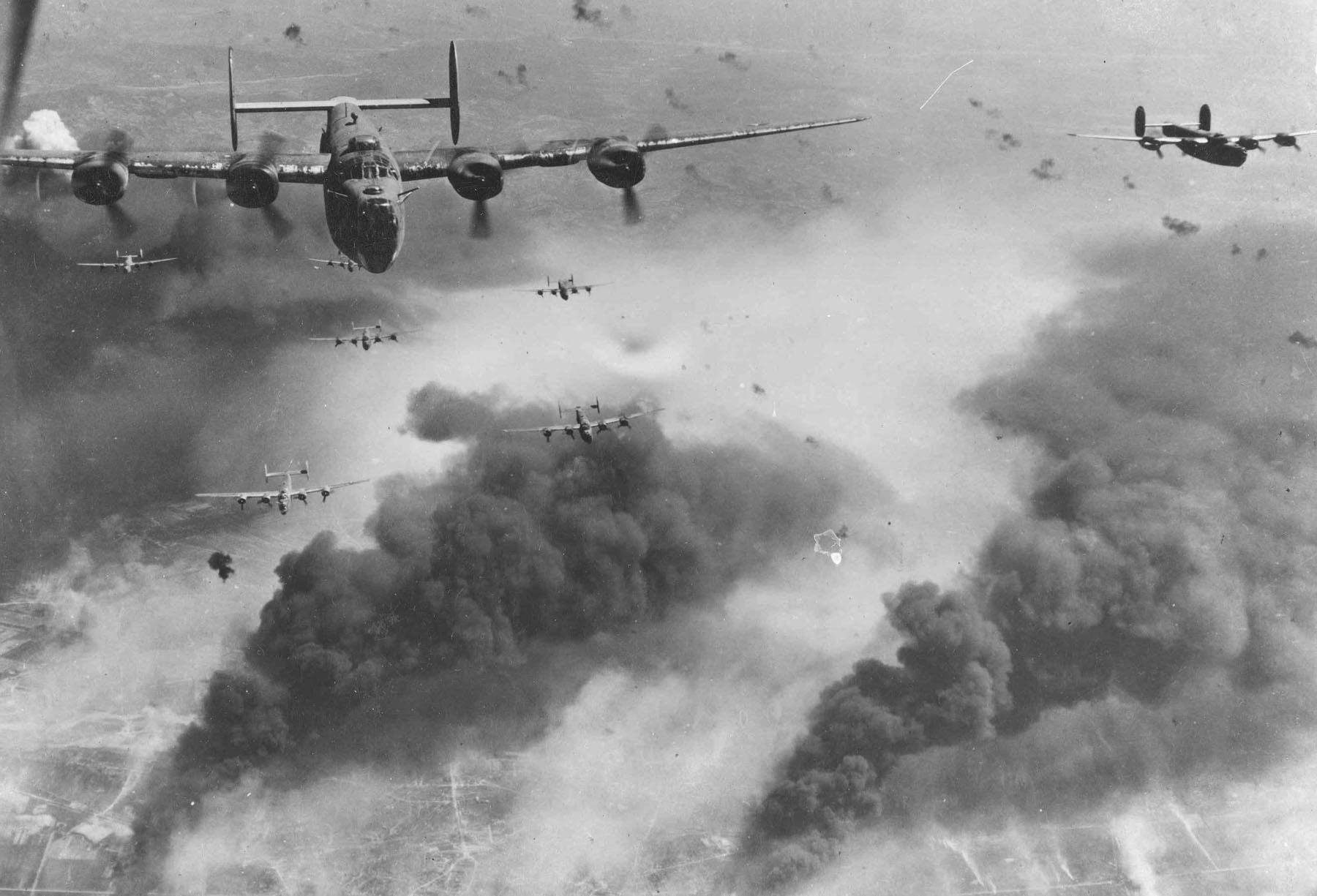
Meanwhile, the U.S. Army Air Force (USAAF) sent thousands of bombers to England to participate in a massive strategic bombing campaign against Germany. The Allies’ plan was to bomb Germany around the clock. Allied bombers destroyed German factories, rail yards, and oil fields during the day and carpet-bombed German cities at night. Flying in formation, they initially flew unescorted, since many believed that “flying fortress” bombers equipped with defensive guns flew too high and too fast to be attacked. However, advanced German technology allowed fighters to easily shoot down the lumbering bombers. German fighter planes shot down almost 50 percent of American aircraft until long-range escort fighters were developed that allowed the bombers to focus on their targets while the fighters confronted opposing German aircraft.
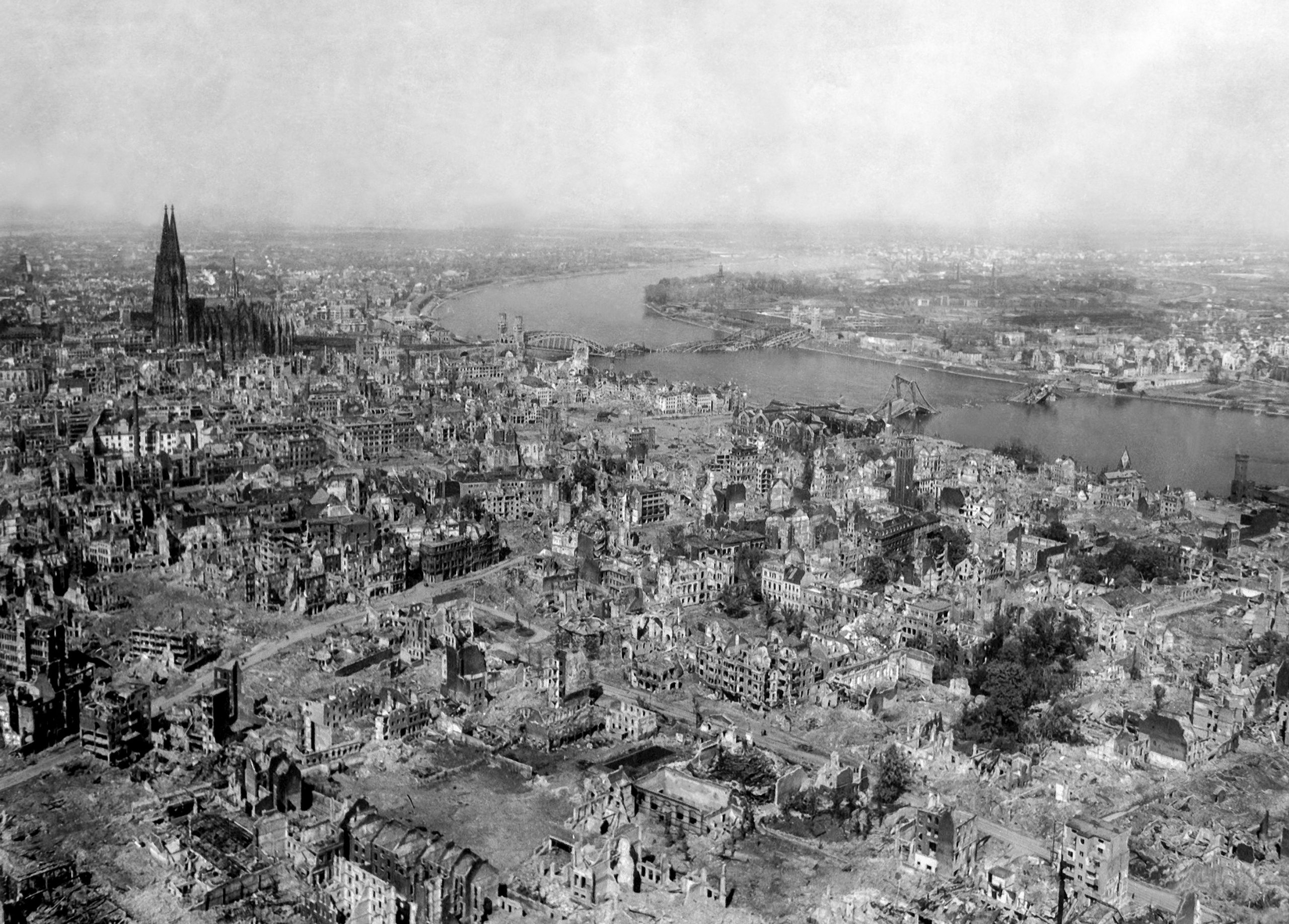
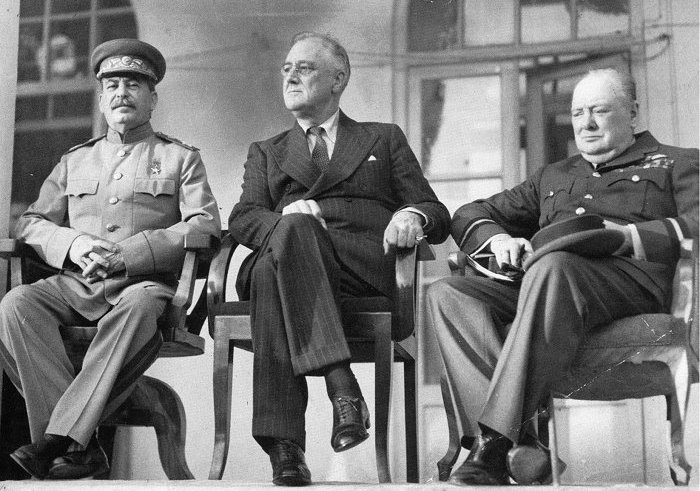
In the wake of the Soviet victory at Stalingrad, Roosevelt, Churchill, and Stalin met in Tehran in November 1943. Dismissing Africa and Italy as a sideshow, Stalin demanded that Britain and the United States invade France to support the Soviet advance on the Eastern Front. Churchill hesitated but Roosevelt was eager. The invasion was scheduled for the summer of 1944. But in Italy, the advance northward into Europe’s “soft underbelly” turned out to be much tougher than Churchill had imagined. Italy’s narrow, mountainous terrain and Mussolini’s newly-formed fascist state gave the defending Axis the advantage. Movement up the peninsula was slow and in some battles conditions returned to the trench-like warfare of World War I. Still, the Allies pushed up the peninsula. On June 6, 1944, the day the American army entered Rome, American, British, and Canadian forces launched Operation Overlord, the long-awaited invasion of France. D-Day, as it became popularly known, was the largest amphibious assault in history. American general Dwight Eisenhower was so uncertain of the attack’s chance of success that the night before the invasion he wrote two speeches: one for success and one for failure. Using over 5,000 landing and assault craft, 160,000 men crossed the English Channel on D-Day. The Allied landings at Normandy were successful and by the end of the month 875,000 Allied troops had arrived in France. Paris was liberated roughly two months later.
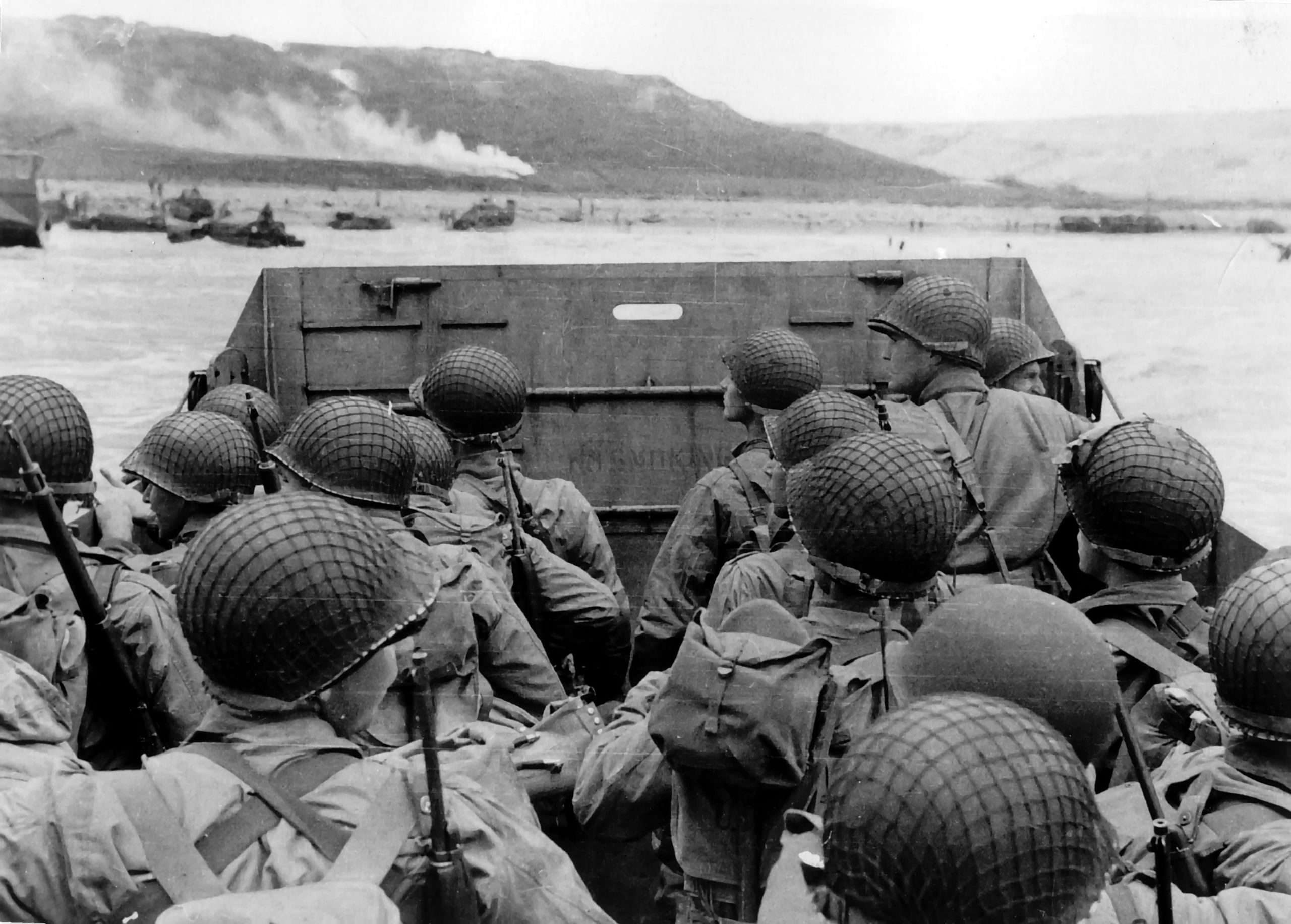
Allied bombing expeditions, meanwhile, continued to level German cities and industrial capacity. The Royal Air Force estimated that the Allies destroyed more than half of the “built up areas” in seven of the ten largest German cities with more than 500,000 residents. The RAF’s goal, similar to that of Germany during the Blitz, was for bombing to be “focused on the morale of the enemy civil population and in particular of the industrial workers.” The USAAF flew over 750,000 bomber sorties and dropped nearly a million and a half tons of bombs. Up to five hundred thousand German civilians were killed by allied bombing.
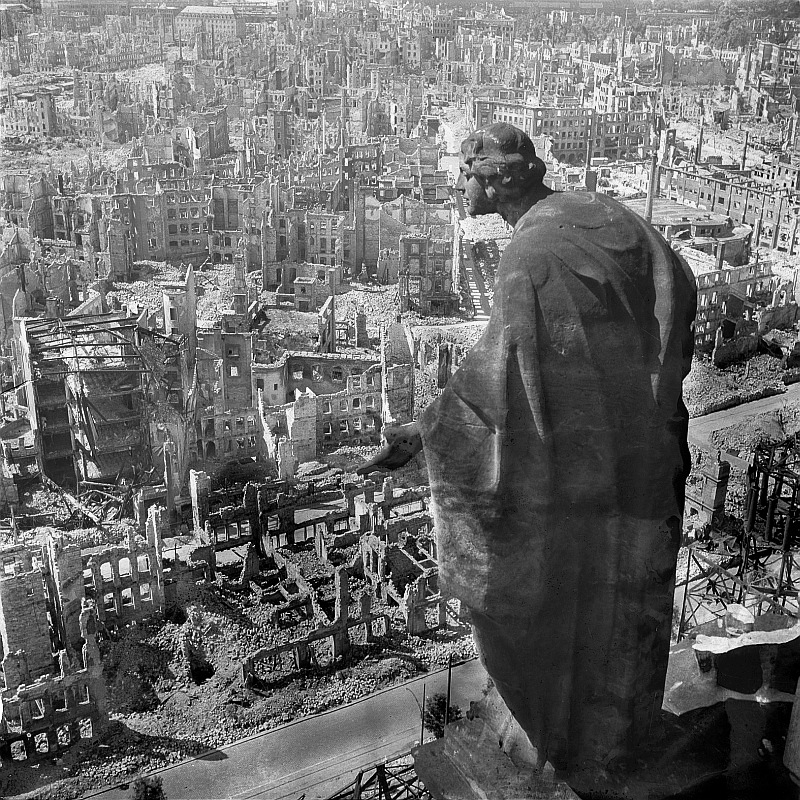
The Nazis were crumbling on both fronts. Hitler tried to turn the war in his favor in the west. The Battle of the Bulge in December 1944 and January 1945 was the largest and deadliest single battle fought by U.S. troops in the war. The desperate Germans failed to drive the Allies back from the Ardennes forests to the English Channel, but the delay cost the Allies the winter. The invasion of Germany from the west would have to wait, while the Soviet Union continued its relentless push westward, ravaging German civilian populations in retribution for German war crimes. German counterattacks failed to prevent the Soviet advance and 1945 began with the end of European war in sight. Roosevelt, Churchill, and Stalin met again at Yalta, a Crimean resort city on the Black Sea, where they reaffirmed their demand for Hitler’s unconditional surrender and began to plan for postwar Europe.
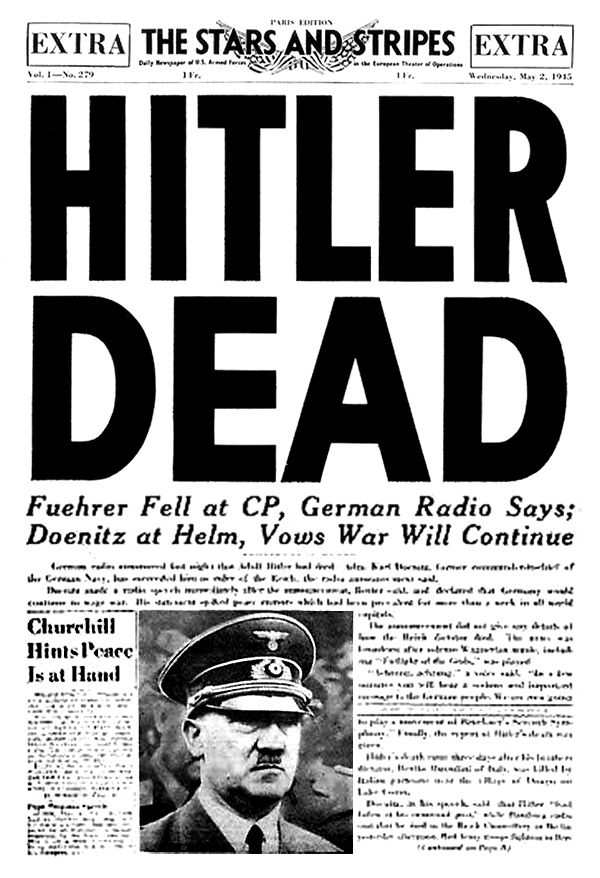
Soviet Red Army troops reached Germany in January 1945 and the Americans crossed the Rhine in March. In late April American and Soviet troops met at the Elbe but the Russians reached Berlin first and took the capital city in May. A few days before their arrival, Hitler and members of his high command had committed suicide in a city bunker. Germany was conquered and the European war was over. Allied leaders met again at Potsdam, Germany, although this time Stalin and Churchill met with Harry Truman, since Franklin Roosevelt had died in office, during his fourth presidential term. They decided that Germany would be divided into pieces according to current Allied occupation, with Berlin likewise divided. Stalin also agreed to join the fight in Asia against Japan in approximately three months. Truman whispered to Stalin that the US had just completed a new weapon that he thought might change the Pacific war, but Stalin did not seem too impressed.
5. The U. S. and the Japanese War
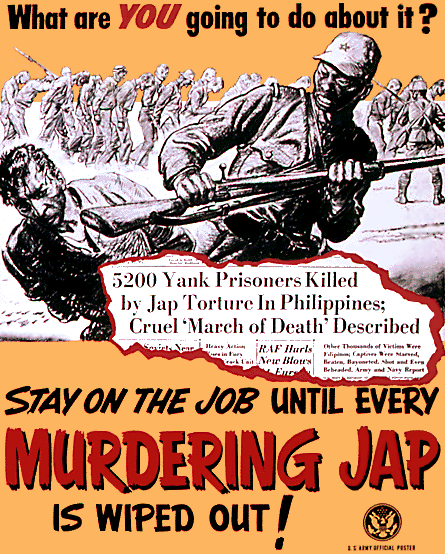
As Americans celebrated V-E (Victory in Europe) Day, they redirected their full attention to the still-raging Pacific War. As in Europe, the war in the Pacific had started slowly. After Pearl Harbor, Japan conquered the American-controlled Philippine archipelago. After running out of ammunition and supplies, the garrison of American and Filipino soldiers surrendered. The prisoners were marched eighty miles to a Japanese prisoner-of-war camp without food, water, or rest. Ten thousand died on the Bataan Death March.
But as Americans mobilized their armed forces, the tide turned. America’s war in the Pacific began much sooner than D-Day in Europe. Four months after Japan’s surprise attack on Hawaii, in April 1942, the USAAF bombed Tokyo using sixteen B-25 medium range bombers launched from an aircraft carrier in the Pacific. The man who planned and led the raid, Lt. Col. Jimmy Doolittle, said of the plan, “The Japanese people had been told they were invulnerable…An attack on the Japanese homeland would cause confusion in the minds of the Japanese people and sow doubt about the reliability of their leaders.” Doolittle added, “There was a second and equally important psychological reason for this attack: Americans badly needed a morale boost.”
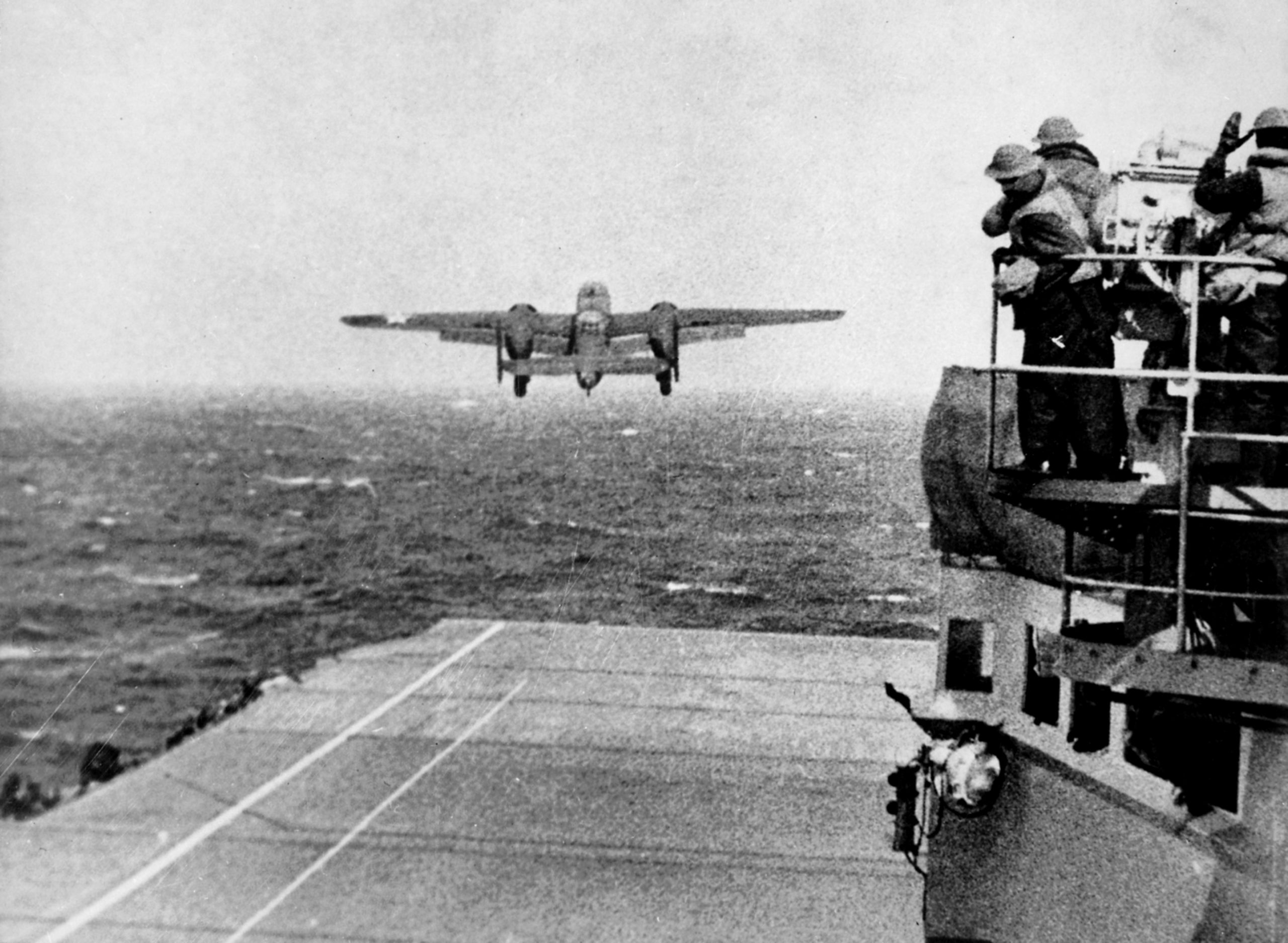
In the summer of 1942, American naval victories at the Battle of the Coral Sea and the aircraft carrier duel at the Battle of Midway crippled Japan’s Pacific naval operations. To dislodge Japan’s hold over the Pacific, the U.S. military began attacking island after island, bypassing the strongest but seizing those capable of holding airfields to continue pushing Japan out of the region. Combat was vicious. At Guadalcanal Japanese soldiers launched suicidal charges rather than surrender. Many Japanese soldiers refused to be taken prisoner or to take prisoners themselves. Such tactics, coupled with American racial prejudice, turned the Pacific Theater into a more brutal and barbarous conflict than the European Theater.
Japanese defenders fought tenaciously. Few battles were as one-sided as the Battle of the Philippine Sea, a Japanese counterattack the Americans called the Great Marianas Turkey Shoot. Japanese soldiers bled the Americans in their advance across the Pacific. At Iwo Jima, an eight-square-mile island of volcanic rock, seventeen thousand Japanese soldiers held the island against seventy thousand Marines for over a month. At the cost of nearly their entire force, they inflicted almost thirty thousand casualties before the island was lost.
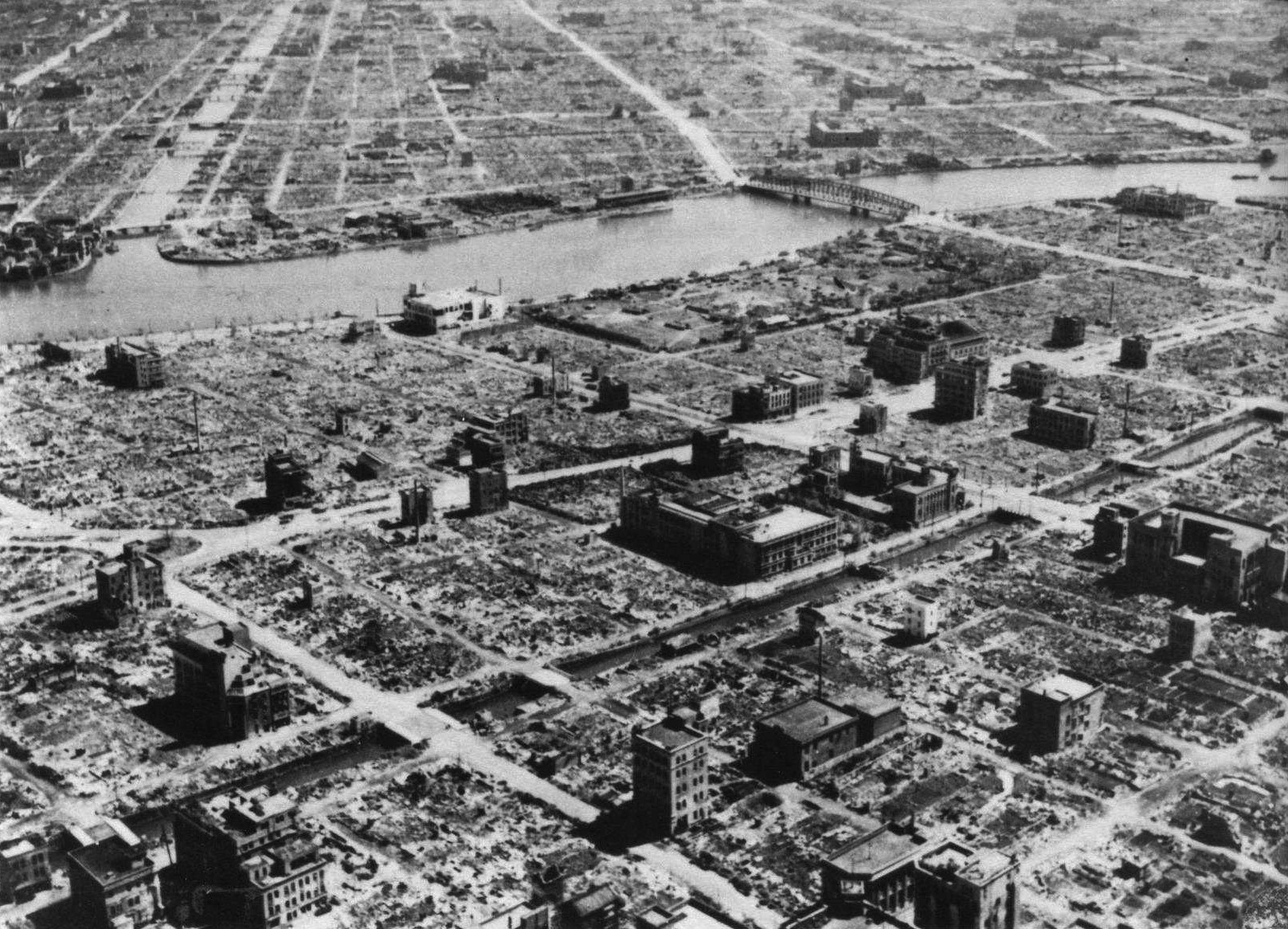
By February 1945, American bombers were in range of the mainland. Bombers hit Japan’s industrial facilities but suffered high casualties. To spare bomber crews from dangerous daylight raids and to achieve maximum effect against Japan’s wooden cities, American bombers dropped incendiary weapons that created massive firestorms and wreaked havoc on Japanese cities. Over sixty Japanese cities were fire-bombed. American fire bombs killed one hundred thousand civilians in Tokyo in March 1945.
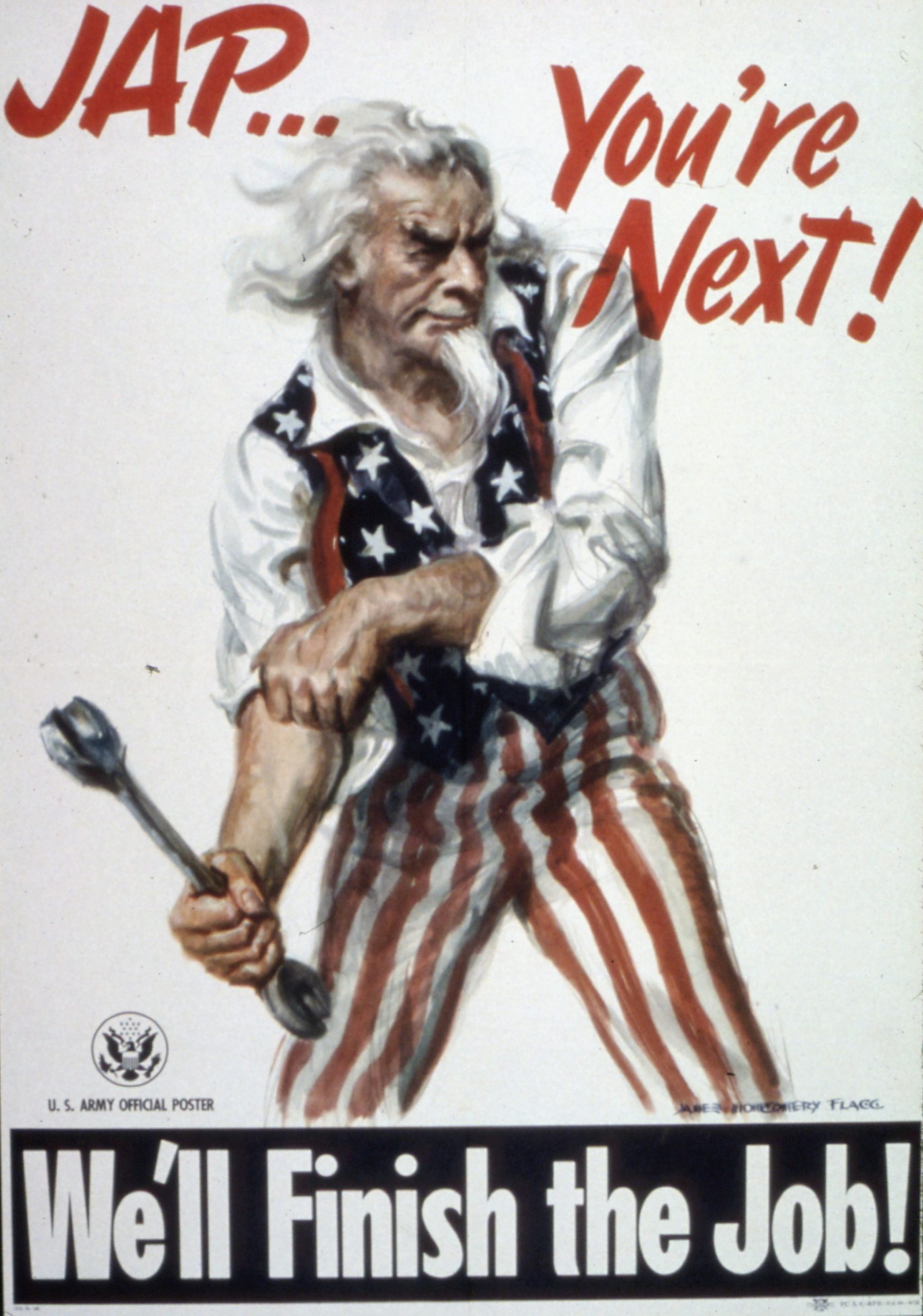
In June 1945, after eighty days of fighting and tens of thousands of casualties, the Americans captured the island of Okinawa. The mainland of Japan was open before them. It was a viable base from which to launch a full invasion of the Japanese homeland and end the war. Estimates varied, but given the tenacity of Japanese soldiers fighting on islands far from their home, some officials estimated that an invasion of the Japanese mainland could cost half a million American casualties and kill millions of Japanese civilians. Historians debate the many motivations that ultimately drove the Americans to use atomic weapons against Japan, and many American officials criticized the decision, but government leaders and military officials cited the casualty estimates of an invasion to justify their use.
Early in the war, fearing that German scientists might develop an atomic bomb, the U.S. government recruited American scientists to build one first. The German-Hungarian-American physicist Leó Szilárd wrote a letter to Franklin Roosevelt in 1939 which Albert Einstein signed, warning of the possibility of an atomic bomb. After some debate, other American physicists acknowledged the possibility. The U.S. government responded in 1942 with the Manhattan Project, a hugely expensive, ambitious program to create a single weapon capable of leveling an entire city. Three years later, the Americans successfully exploded the world’s first nuclear device, Trinity, in New Mexico in July 1945. Physicist J. Robert Oppenheimer, the director of the Los Alamos Laboratory where the bomb was designed, later recalled that the event reminded him of a line from Hindu scripture: “Now I am become death, the destroyer of worlds.” Two more bombs, Little Boy and Fat Man, were quickly built and detonated over two Japanese cities in August. The Hiroshima bomb was dropped at 8:15 on the morning of August 6. Over one hundred thousand civilians were killed. On August 9, the second bomb, Fat man, was scheduled to be dropped on the castle town of Kokura. But the town was obscured by clouds, so the mission proceeded to the secondary target. Nagasaki was an important port city on the southern island, Kyushu, with a population of about a quarter million people. The Fat Man bomb detonated over the Mitsubishi munitions factory and the city arsenal. About eighty thousand civilians were killed.
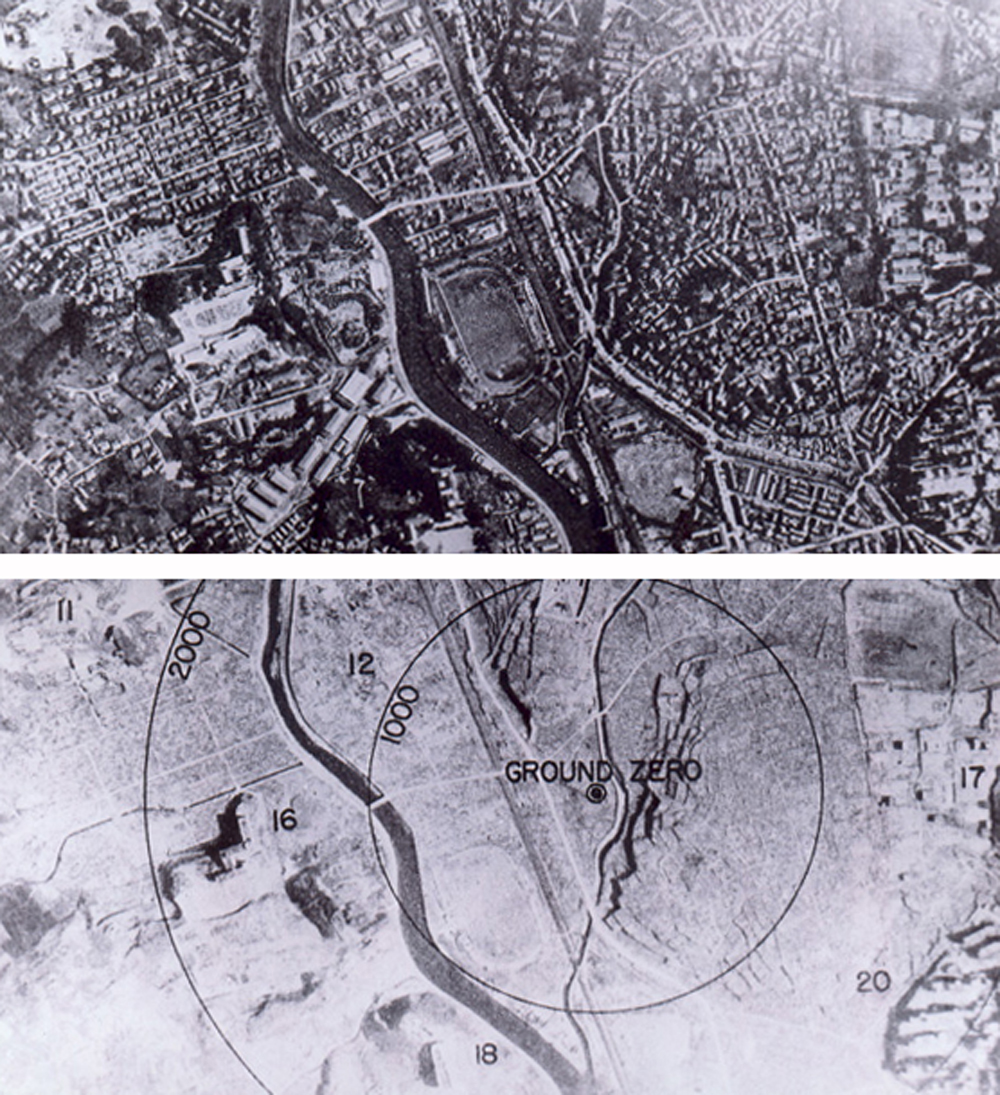
In addition to the American atom bomb attacks, on August 9th, Soviet forces invaded Manchuria and overthrew the Japanese puppet state of Manchukuo. On August 10th, the Japanese Cabinet agreed to the Allies terms for surrender. Emperor Hirohito endorsed their decision on August 15 and announced the surrender of Japan. On September 2, aboard the battleship USS Missouri, delegates from the Japanese government formally signed their surrender. World War II was finally over.
6. The Wartime Economy
Economies win wars as much as militaries. The war effort converted American factories to wartime production, reawakened America’s economic might, armed Allies and the American armed forces, effectively pulled America out of the Great Depression, and ushered in an era of unparalleled economic prosperity. Roosevelt’s New Deal had ameliorated the worst of the Depression, but the economy was still limping its way forward. When Europe fell into war, Americans were glad to sell the Allies arms and supplies. And then Pearl Harbor changed everything. The United States drafted the economy into war service. The “sleeping giant” mobilized its unrivaled economic capacity to wage worldwide war. Governmental entities such as the War Production Board and the Office of War Mobilization and Reconversion managed production for the war effort and economic output exploded. An economy that had been unable to provide work for a quarter of the workforce less than a decade earlier now struggled to fill vacant positions.

Although Franklin Roosevelt had already embraced the ideas of economist John Maynard Keynes on using deficit spending to jump-start the economy, the war exploded any resistance among conservatives. Government spending during the four years of war doubled all federal spending in all of American history up to that point. The budget deficit soared, but, just as Keynes had predicted, the government’s massive intervention annihilated unemployment and propelled growth. The economy that came out of the war looked nothing like the one that had begun it.
Military production came at the expense of the civilian consumer economy. Appliance and automobile manufacturers converted their plants to produce weapons and vehicles. Consumer choice was sacrificed to patriotic duty. Every American received rationing cards and goods such as gasoline, coffee, meat, cheese, butter, processed food, firewood, and sugar could not be purchased without them. New house-building was shut down, and the cities became overcrowded. But the wartime economy boomed. The Roosevelt administration urged citizens to save their earnings or buy war bonds to prevent inflation. Bond drives were headlined by Hollywood celebrities and were hugely successful. They not only funded much of the war effort, they helped tame inflation as well. So too did tax rates. The federal government raised income taxes and boosted the top marginal tax rate to 94 percent.
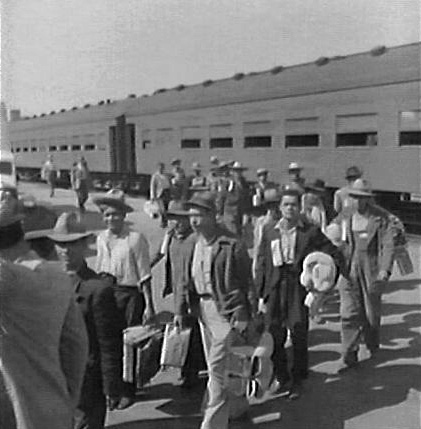
During the war, African Americans continued to leave the agrarian South for the industrial North. And as more men joined the military and more positions went unfilled, women joined the workforce en masse. Other American producers looked outside the United States, to Mexico, to fill their labor needs. Between 1942 and 1964, the United States contracted thousands of Mexican nationals to work in American agriculture and railroads in the Bracero Program. Jointly administered by the State Department, the Department of Labor, and the Department of Justice, the binational agreement secured five million contracts across twenty-four states. With factory work proliferating across the country and agricultural labor experiencing severe labor shortages, the presidents of Mexico and the United States signed an agreement in July 1942 to bring the first group of legally contracted workers to California. Discriminatory policies toward people of Mexican descent prevented bracero contracts in Texas until 1947. Though braceros suffered exploitative labor conditions, for the men who participated the program was a mixed blessing. Interviews with ex-braceros captured the complexity. “They would call us pigs . . . they didn’t have to treat us that way,” one said of his employers, while another said, “For me it was a blessing, the United States was a blessing . . . it is a nation I fell in love with because of the excess work and good pay.” After the exodus of Mexican migrants during the Depression, the program helped reestablish Mexican migration, institutionalized migrant farm work across much of the country, and further planted a Mexican presence in the southern and western United States.
7. Women in World War II
President Roosevelt and his administration encouraged all able-bodied American women to help the war effort. He considered the role of women in the war critical for American victory, and the public expected women to free men for active military service. While most women opted to remain at home or volunteer with charitable organizations, many went to work or donned a military uniform. World War II brought unprecedented labor opportunities for American women. Industrial labor, normally dominated by men, shifted to women for the duration of wartime mobilization. Women got jobs in new munitions factories. The image of Rosie the Riveter inscribed with the phrase We Can Do It! encouraged female factory labor during the war. And over a million administrative jobs at the local, state, and national levels were transferred from men to women for the duration of the war.
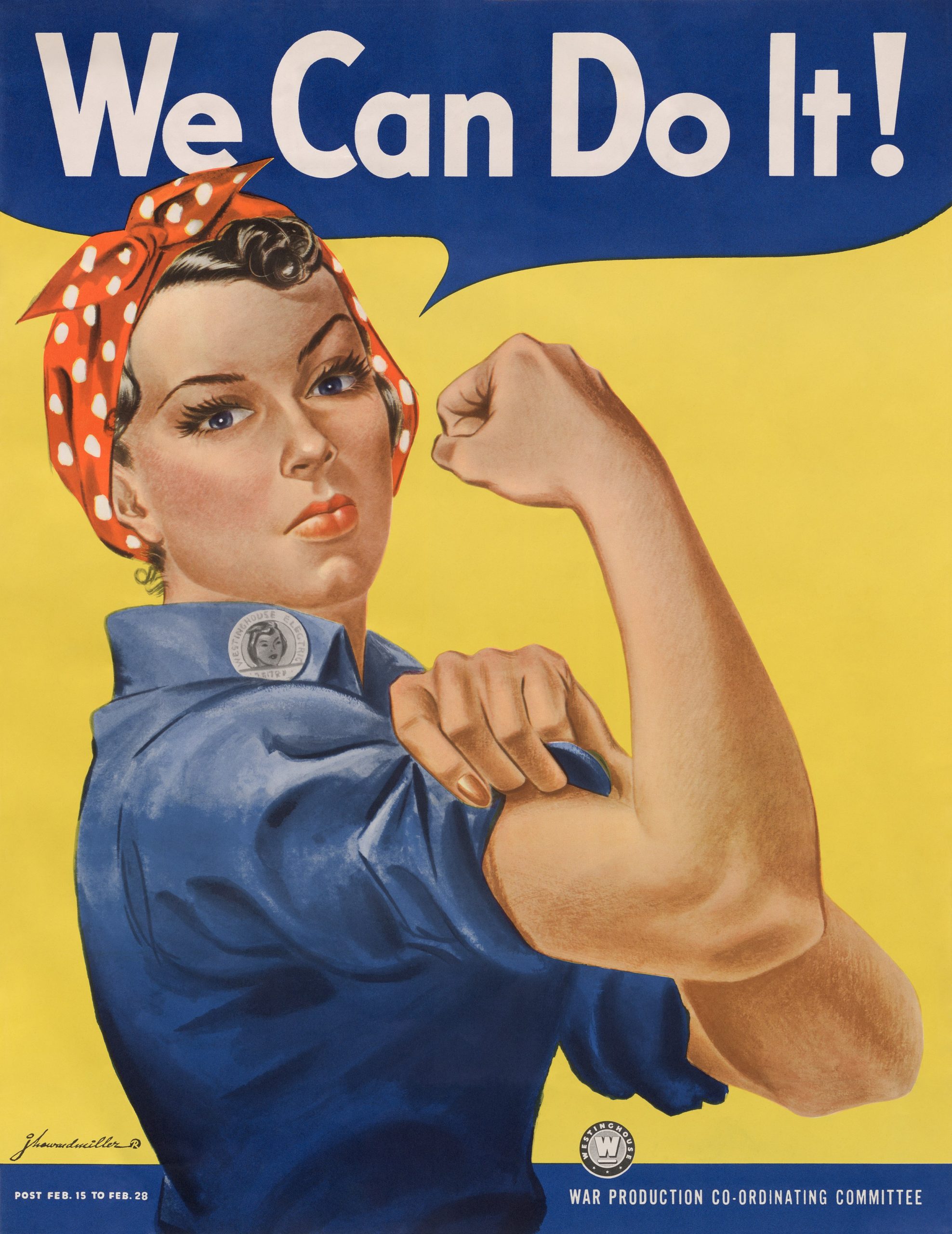
For women who chose not to work in factories or government service, many volunteer opportunities presented themselves. The American Red Cross, the largest charitable organization in the nation, encouraged women to volunteer with local city chapters. Millions of women organized community social events for families, packed and shipped almost half a million tons of medical supplies, and prepared twenty-seven million care packages for American and other Allied prisoners of war. The American Red Cross required all female volunteers to certify as nurse’s aides, providing an extra benefit and work opportunity for hospital staffs that suffered severe personnel losses.
Military service was another option for women who wanted to join the war effort. Over 350,000 women served in several all-female units of the military branches. The Army and Navy Nurse Corps Reserves, the Women’s Army Auxiliary Corps, the Navy’s Women Accepted for Volunteer Emergency Service, the Coast Guard’s SPARs (named for the Coast Guard motto, Semper Paratus, “Always Ready”), and Marine Corps units gave women the opportunity to serve as either commissioned officers or enlisted members at military bases at home and abroad. The Nurse Corps Reserves commissioned 105,000 army and navy nurses recruited by the American Red Cross. Military nurses worked at base hospitals, mobile medical units, and onboard hospital ships.
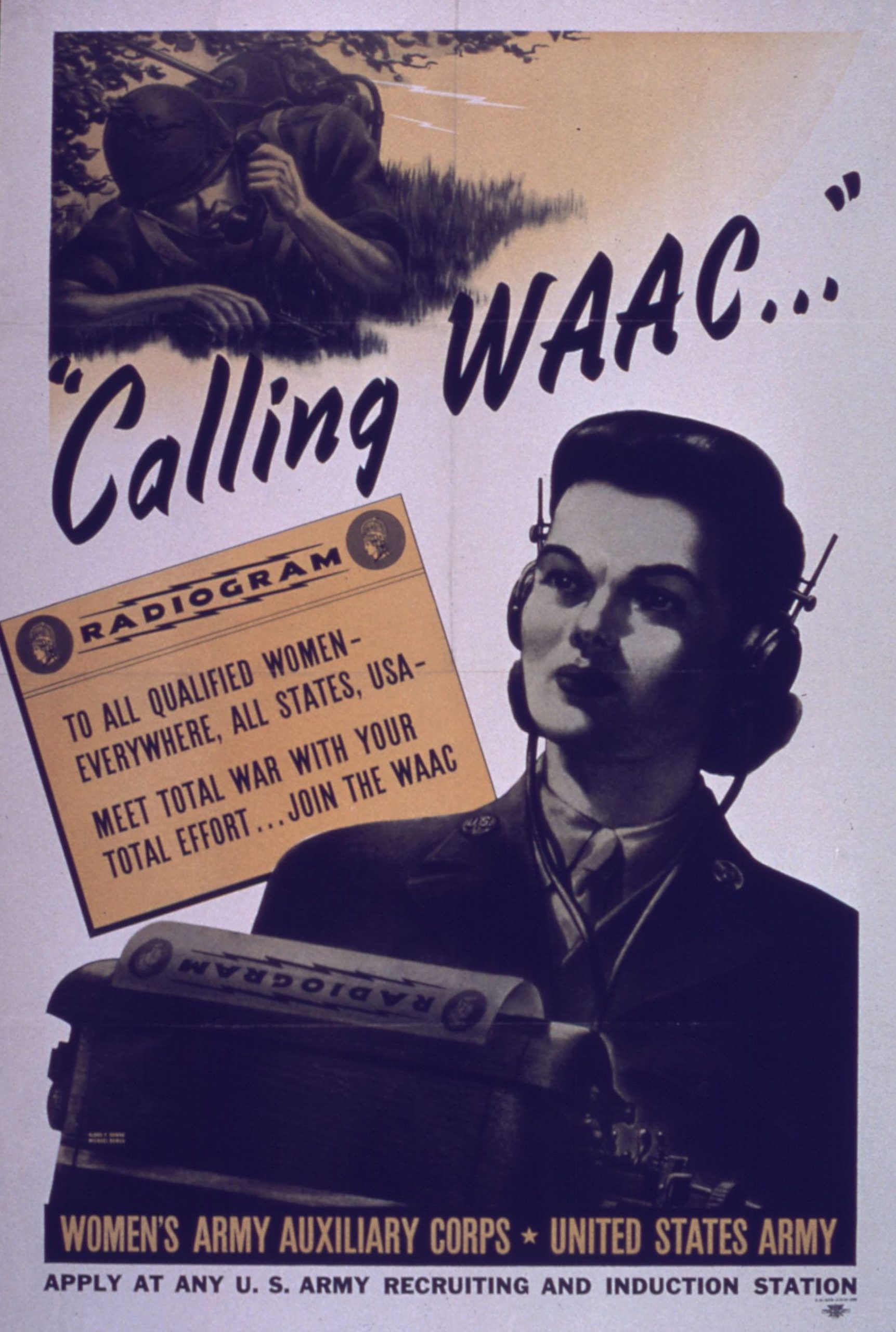
Jim Crow segregation in both the civilian and military sectors remained a problem for black women who wanted to join the war effort. Even after President Roosevelt signed Executive Order 8802 in 1941, supervisors who hired black women still often relegated them to the most menial tasks on factory floors. Segregation was further upheld in factory lunchrooms, and many black women were forced to work at night to keep them separate from whites. In the military, the Women’s Army Auxiliary Corps and the Nurse Corps Reserves accepted black women for active service, but the army set a limited quota of 10 percent for black female officers and enlisted women and segregated black units on active duty. The American Red Cross, meanwhile, recruited only four hundred black nurses for the Army and Navy Nurse Corps Reserves, and black army and navy nurses worked in segregated military hospitals on bases stateside and overseas.
And for all of the postwar celebration of Rosie the Riveter, after the war ended the men returned and most women lost their jobs. Meanwhile, former military women faced difficulty obtaining veteran’s benefits during their transition to civilian life. The nation that called for assistance to millions of women during the four-year crisis hardly stood ready to accommodate their postwar needs and demands.
8. Blacks in World War II
In early 1941, months before the Japanese attack on Pearl Harbor, A. Philip Randolph, president of the Brotherhood of Sleeping Car Porters, the largest black trade union in the nation, made headlines by threatening President Roosevelt with a march on Washington, D.C. In this “crisis of democracy,” Randolph said, defense industries refused to hire African Americans and the armed forces remained segregated. In exchange for Randolph calling off the march, Roosevelt issued Executive Order 8802, banning racial and religious discrimination in defense industries and establishing the Fair Employment Practice Committee to monitor defense industry hiring practices. While the armed forces remained segregated throughout the war, the order showed that the federal government could stand against discrimination. The black workforce in defense industries rose from 3 percent in 1942 to 9 percent in 1945.
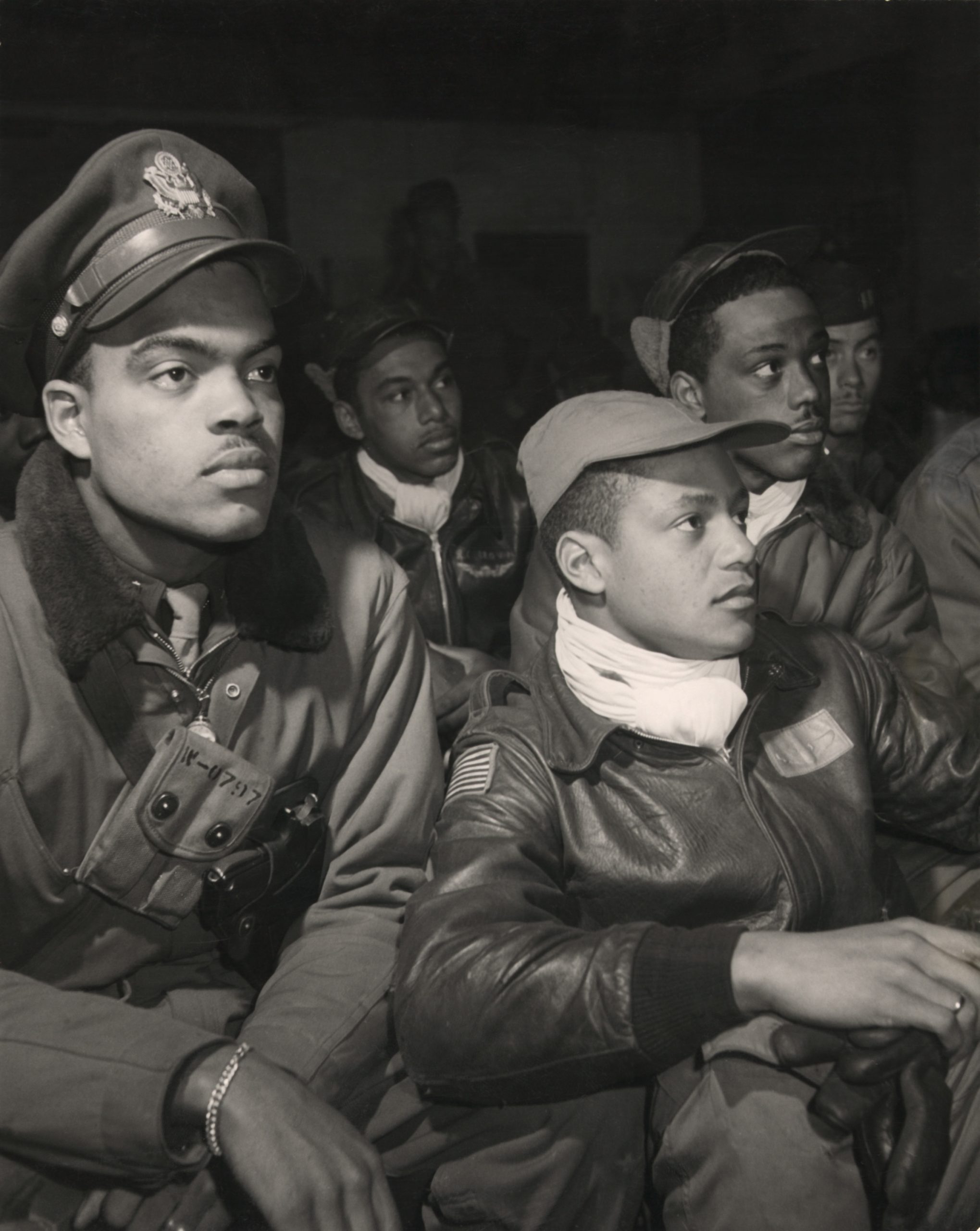
More than one million African Americans fought in the war. Most blacks served in segregated, noncombat units led by white officers. Some gains were made, however. The number of black officers increased from five in 1940 to over seven thousand in 1945. And all-black fighter and bomber squadrons, known as the Tuskegee Airmen, completed more than 1,500 missions and earned several hundred merits and medals. Black pilots of the 332nd Fighter Group painted the tails of their P-47 Thunderbolts red and many bomber crews specifically requested the Red Tail Angels as escorts. Near the end of the war, the army and navy began integrating some of their units and facilities, before the U.S. government finally ordered the full integration of its armed forces in 1948.
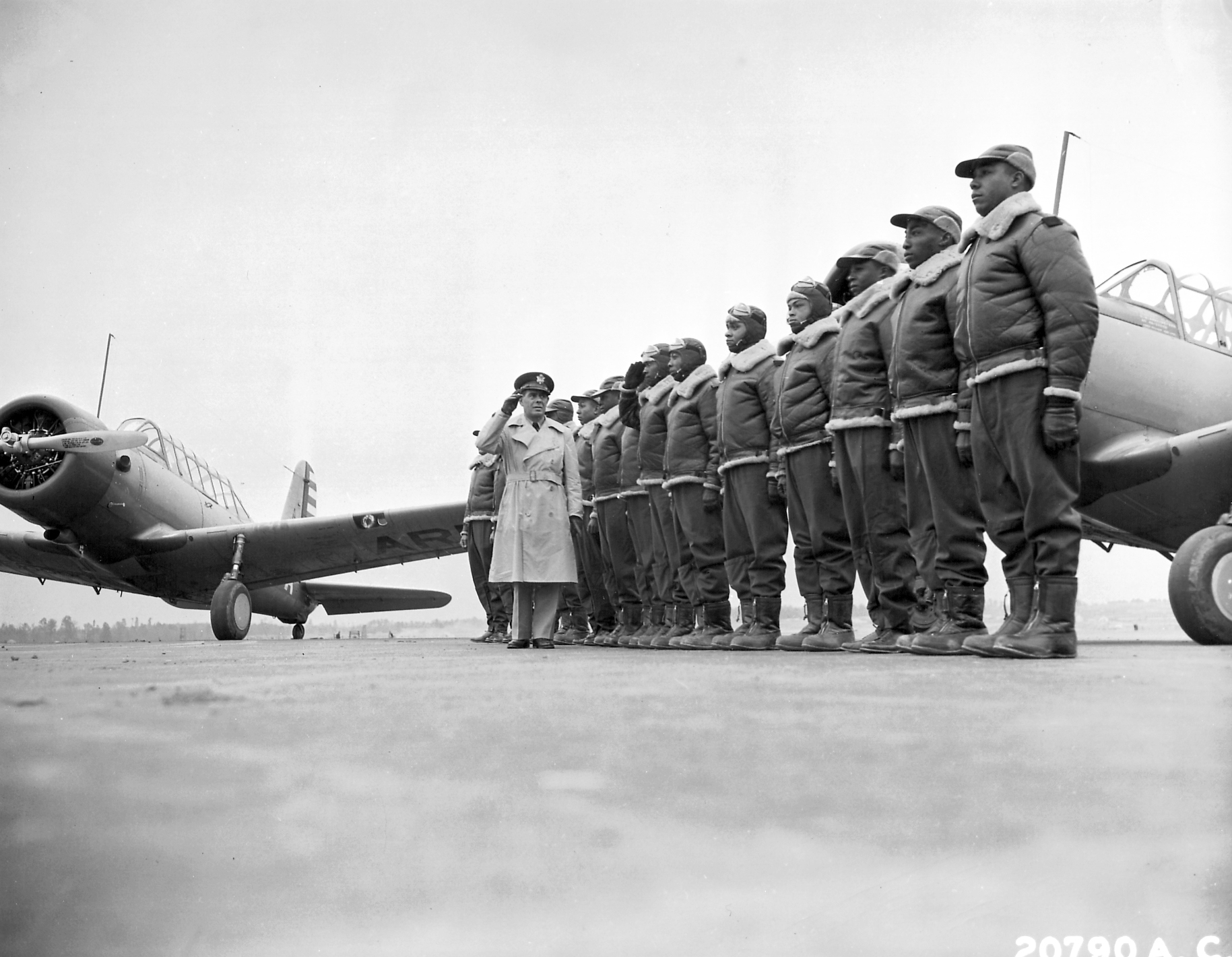
While some black Americans served in the armed forces, others on the home front became riveters and welders, rationed food and gasoline, and bought victory bonds. Many black Americans saw the war as an opportunity not only to serve their country but to improve it. The Pittsburgh Courier, a leading black newspaper, spearheaded the Double V campaign. It called on African Americans to fight two wars: the war against Nazism and fascism abroad and the war against racial inequality at home. To achieve victory and “real democracy,” the Courier encouraged its readers to enlist in the armed forces, volunteer on the home front, and fight against racial segregation and discrimination.During the war, membership in the NAACP jumped tenfold, from fifty thousand to five hundred thousand. The Congress of Racial Equality, formed in 1942, proposed nonviolent direct action to achieve desegregation. Between 1940 and 1950, 1.5 million southern blacks also demonstrated their opposition to racism and violence by migrating out of the Jim Crow South to the North. But transitions were not easy. Racial tensions erupted in 1943 in a series of riots in cities such as Mobile, Beaumont, and Harlem. The bloodiest race riot occurred in Detroit and resulted in the death of twenty-five blacks and nine whites. Still, the war ignited in African Americans an urgency for equality that they would carry with them into the subsequent years.
9. Alien Enemies
Many Americans had to navigate American prejudice, and America’s entry into the war left foreign nationals from the belligerent nations in a precarious position. The Federal Bureau of Investigation targeted many on suspicions of disloyalty for detainment, hearings, and internment under the Alien Enemy Act. Those sentenced to internment were sent to government camps secured by barbed wire and armed guards. Early internments were based on determinations of probable cause. Then, on February 19, 1942, President Roosevelt signed Executive Order 9066, authorizing the removal of any persons from “exclusion zones” which ultimately covered nearly a third of the country at the discretion of military commanders. Thirty thousand Japanese Americans fought for the United States in World War II, but wartime anti-Japanese sentiment built on historical prejudices. Under Roosevelt’s order, both immigrants and American citizens of Japanese descent were rounded up and placed in prison camps under the custody of the War Relocation Authority. They lost their homes and jobs. Over ten thousand German nationals and a smaller number of Italian nationals were interned at various times in the United States during World War II, but American policies disproportionately targeted Japanese-descended populations, and individuals did not receive personalized reviews prior to their internment. This policy of mass exclusion and detention affected over 110,000 Japanese and Japanese-descended individuals. Seventy thousand were American citizens.
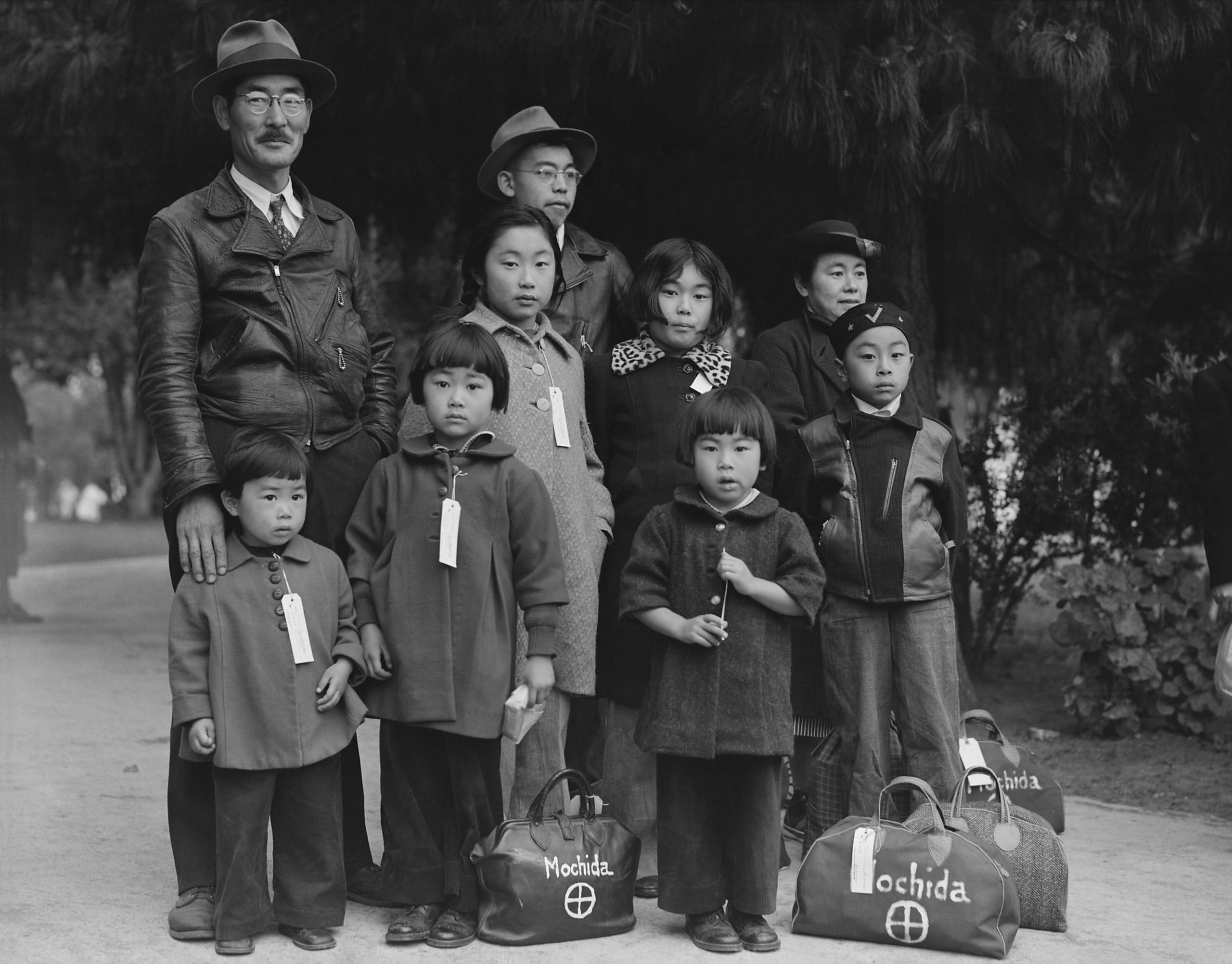
In a 1982 report, a congressional commission concluded that “the broad historical causes” that had caused the internment program were “race prejudice, war hysteria, and a failure of political leadership.” Although the exclusion orders were found to have been constitutionally permissible based on claims of national security, they were later judged, even by the military and judicial leaders, to have been a grave injustice against people of Japanese descent. In 1988, President Reagan signed a law that formally apologized for internment and provided reparations to surviving internees.
10. The Holocaust
But if actions taken during war would be regretted, so would inaction. As the Allies pushed into Germany and Poland, they uncovered the full extent of Hitler’s genocidal policies. The Allies liberated massive camp systems set up for the imprisonment, forced labor, and extermination of all those Untermenschen deemed racially, ideologically, or biologically “unfit” by Nazi Germany. As Russian and American troops liberated concentration and death camps, they discovered the Holocaust, the Nazi state’s systematic murder of eleven million civilians, including six million Jews. But, like the Rape of Nanjing, the Holocaust was not a secret from those who chose to face facts. By the end of the war it had been under way for years. How did America respond?
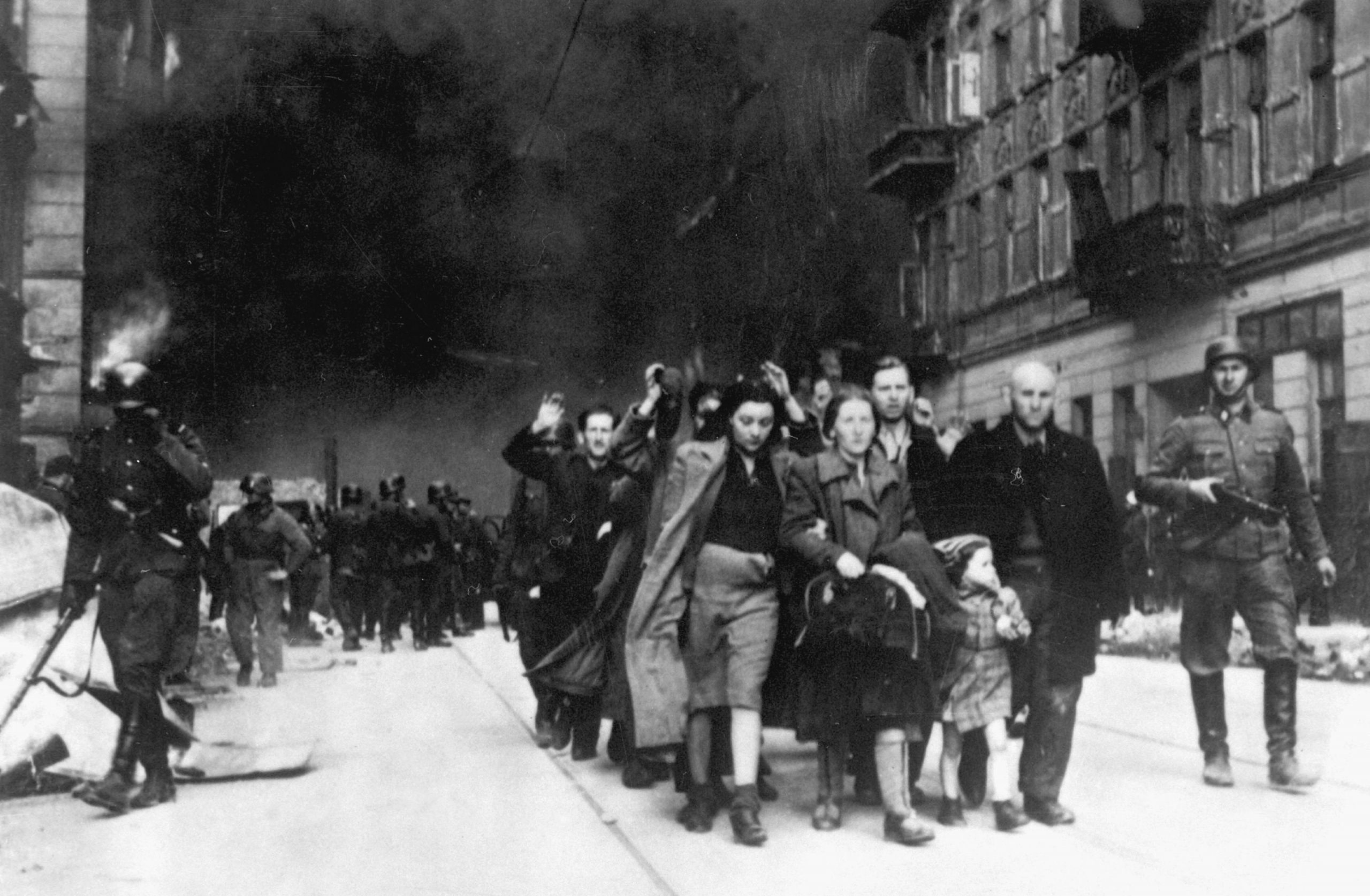
Initially, American officials had expressed little official concern for Nazi persecutions. As the first signs of trouble became clear in the 1930s, the State Department and most U.S. embassies did little to aid European Jews. President Roosevelt publicly spoke out against persecution and even withdrew the U.S. ambassador to Germany after Kristallnacht, a pogrom against German Jews in 1938 that had caused former German Kaiser Wilhelm II to say “For the first time, I am ashamed to be German.” Roosevelt pushed for the 1938 Evian Conference in France, where international leaders discussed the Jewish refugee problem and worked to expand Jewish immigration quotas. But the conference came to nothing, and the United States turned away countless Jewish refugees who requested asylum in the United States. In 1939, the German ship St. Louis, carrying over nine hundred Jewish refugees, could not find a country that would take them. Passengers could not receive visas under the U.S. quota system. The ship cabled Roosevelt for special permission, but the president said nothing. The St. Louis was forced to return to Europe. Hundreds of its passengers would perish in the Holocaust.
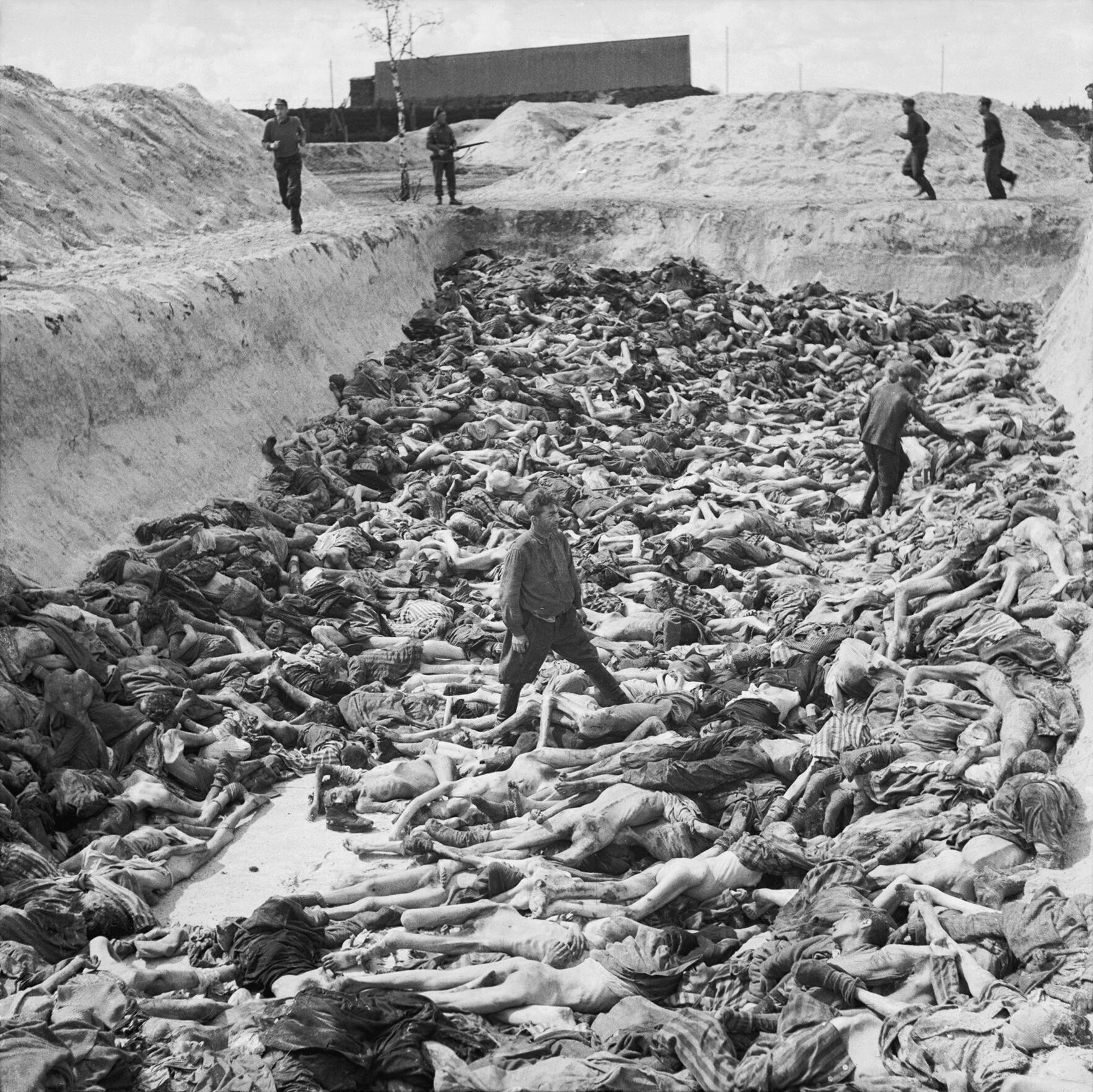
Anti-Semitism still permeated the United States. Even if Roosevelt wanted to do more, he decided the political price for increasing immigration quotas as too high. After Kristallnacht, in 1939, Congress debated a bill to allow twenty thousand German-Jewish children into the United States. First lady Eleanor Roosevelt endorsed the measure, but the president remained publicly silent. The bipartisan bill was introduced by a Democratic senator and a Republican representative and supported by religious and labor groups, but was opposed by nationalist organizations. It never came to a vote in the Senate because it was blocked by a North Carolina Democrat whose support Roosevelt needed on military spending bills. The president, anxious to protect the New Deal and his rearmament programs, was unwilling to expend political capital to save foreign children that even members of his own party had little interest in protecting.
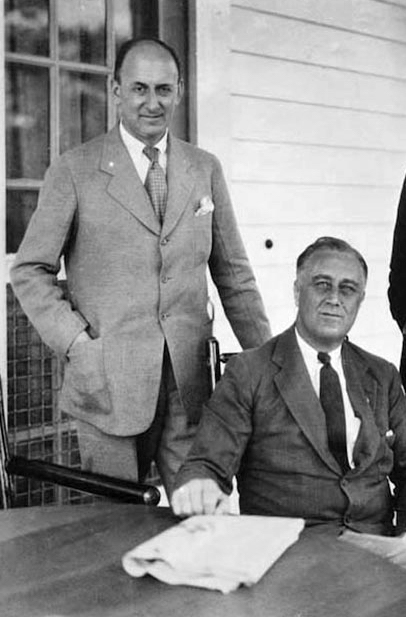
Historians still debate when American leaders and the public realized the full extent of the Holocaust. When the war began, American officials including Roosevelt doubted initial reports of industrial death camps. But even when they conceded their existence, officials pointed to their limited options. The most plausible response was for the U.S. military to bomb the railroads leading to the camps, but this options was rejected by military and civilian officials who argued that it would do little to stop the deportations and would distract from the war effort. Whether bombing would have saved lives remains a hotly debated question.Late in the war, secretary of the treasury Henry Morgenthau, a member of a wealthy Jewish family who had run the treasury since 1934, pushed for changes in American policy. In 1944, he formed the War Refugees Board and became an advocate for Jewish refugees. The WRB saved perhaps two hundred thousand Jews and twenty thousand others. Morgenthau also convinced Roosevelt to issue a public statement condemning the Nazi’s persecution. But it was already 1944, and such policies were far too little, far too late.
11. Toward a Postwar World
Americans celebrated the end of the war after V-J Day in August 1945. At home and abroad, the United States wanted a postwar order that would guarantee global peace and domestic prosperity. Although the alliance of convenience with Stalin’s Soviet Union would rapidly collapse, Americans nevertheless looked for the means to ensure postwar stability and economic security for returning veterans. The inability of the League of Nations to stop German, Italian, and Japanese aggressions caused many to question whether any global organization could effectively ensure world peace. This included Franklin Roosevelt, who, as Woodrow Wilson’s undersecretary of the navy, had witnessed the rejection of The League’s ideal of world governance by both the American people and the Senate. In 1941, Roosevelt believed postwar security could best be maintained by an informal agreement between what he termed the Four Policemen: the United States, Britain, the Soviet Union, and China. But others, including Roosevelt’s secretary of state Cordell Hull and British prime minister Winston Churchill, disagreed and convinced the president to push for a new global organization. As the war ran its course, both Roosevelt and the American public came around to the idea. Pollster George Gallup noted a “profound change” in American attitudes. In 1937 only a third of Americans polled supported the idea of an international organization. But as war broke out in Europe, half of Americans did. America’s entry into the war bolstered support, and by 1945, 81 percent of Americans favored the idea.
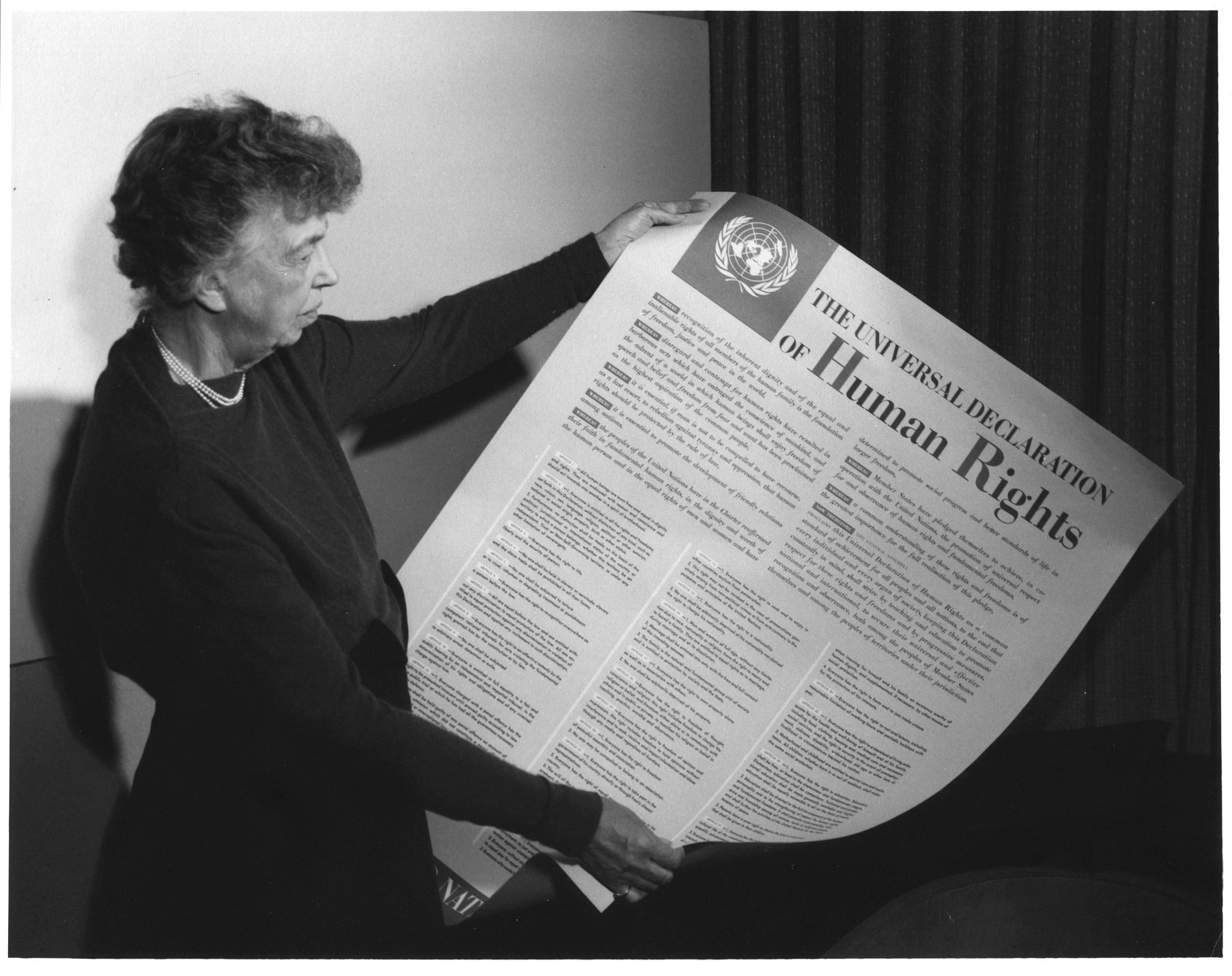
And Franklin Roosevelt had always supported the ideals enshrined in the United Nations charter. In January 1941, he described Four Freedoms that all of the world’s citizens should enjoy: freedom of speech, of worship, from want, and from fear. That same year he signed the Atlantic Charter with Churchill, that reinforced those ideas and added the right of self-determination and promised some sort of economic and political cooperation. Roosevelt first used the term united nations to describe the Allied powers, not the subsequent postwar organization. But the name stuck. At Tehran in 1943, Roosevelt and Churchill convinced Stalin to send a Soviet delegation to a conference in August 1944, where they agreed on the basic structure of the new organization. It would have a Security Council consisting of the original Four Policemen and France, that would consult on how best to keep the peace and when to deploy the military power of the assembled nations. But the plan was a hybrid between Roosevelt’s policemen idea and a global organization of equal representation. There would also be a General Assembly made up of all nations, an International Court of Justice, and a council for economic and social matters. The Soviets expressed concern over how the Security Council would work, but the powers agreed to meet again in San Francisco between April and June 1945 for further negotiations. There, on June 26, 1945, fifty nations signed the UN charter.
Anticipating victory in World War II, American leaders not only looked to the postwar global order, they looked to the fate of returning servicemen. American politicians and business leaders wanted to avoid another economic depression by gradually easing returning veterans back into the civilian economy. The brainchild of William Atherton, the head of the American Legion, the G.I. Bill won support from progressives and conservatives alike. Passed in 1944, the G.I. Bill was a multibillion-dollar entitlement program that rewarded honorably-discharged veterans with numerous benefits.
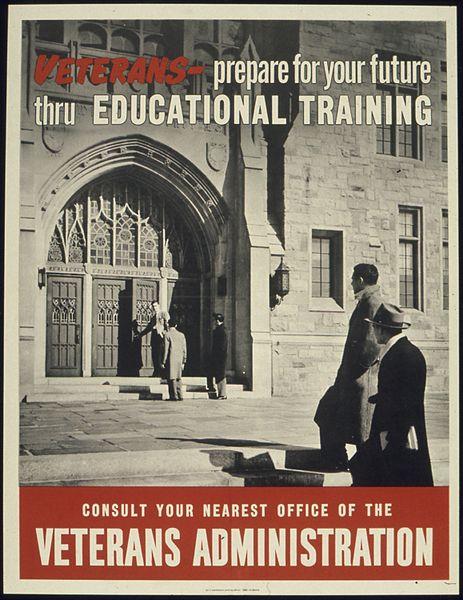 Faced with the prospect of over fifteen million members of the armed services (including approximately 350,000 women) suddenly returning to civilian life, the G.I. Bill offered a variety of inducements to slow their return to the civilian workforce as well as reward their service with public benefits. The legislation offered a year’s worth of unemployment benefits for veterans unable to secure work. About half of American veterans (eight million) received a total of $4 billion in unemployment benefits over the life of the bill. The G.I. Bill also made postsecondary education a reality for many. The Veterans Administration paid educational expenses including tuition, fees, supplies, and even stipends for living expenses, sparking a boom in higher education. Enrollments at accredited colleges, universities, technical, and professional schools spiked from 1.5 million in 1940 to 3.6 million in 1960. The VA disbursed over $14 billon in educational aid in just over a decade. Furthermore, the bill encouraged home ownership. Roughly 40 percent of Americans owned homes in 1945, but that figure climbed to 60 percent a decade after the close of the war. Because the bill did away with down payment requirements, veterans could obtain home loans for as little as $1 down. Close to four million veterans purchased homes through the G.I. Bill, sparking a construction bonanza that propelled postwar growth. In addition, the VA helped nearly two hundred thousand veterans secure farms and offered thousands more guaranteed financing for small businesses. The effects of the G.I. Bill were significant and long-lasting. It helped sustain the great postwar economic boom and established the hallmarks of American middle class life.
Faced with the prospect of over fifteen million members of the armed services (including approximately 350,000 women) suddenly returning to civilian life, the G.I. Bill offered a variety of inducements to slow their return to the civilian workforce as well as reward their service with public benefits. The legislation offered a year’s worth of unemployment benefits for veterans unable to secure work. About half of American veterans (eight million) received a total of $4 billion in unemployment benefits over the life of the bill. The G.I. Bill also made postsecondary education a reality for many. The Veterans Administration paid educational expenses including tuition, fees, supplies, and even stipends for living expenses, sparking a boom in higher education. Enrollments at accredited colleges, universities, technical, and professional schools spiked from 1.5 million in 1940 to 3.6 million in 1960. The VA disbursed over $14 billon in educational aid in just over a decade. Furthermore, the bill encouraged home ownership. Roughly 40 percent of Americans owned homes in 1945, but that figure climbed to 60 percent a decade after the close of the war. Because the bill did away with down payment requirements, veterans could obtain home loans for as little as $1 down. Close to four million veterans purchased homes through the G.I. Bill, sparking a construction bonanza that propelled postwar growth. In addition, the VA helped nearly two hundred thousand veterans secure farms and offered thousands more guaranteed financing for small businesses. The effects of the G.I. Bill were significant and long-lasting. It helped sustain the great postwar economic boom and established the hallmarks of American middle class life.
12. Conclusion
The United States entered the war in a crippling economic depression and exited at the beginning of an unparalleled economic boom. The war had been won, the United States was stronger than ever, and Americans looked forward to a prosperous future. And yet new problems loomed. Stalin’s Soviet Union, a Communist victory in China, and the proliferation of nuclear weapons would disrupt postwar dreams of global harmony. Meanwhile, Americans who had fought a war for global democracy would find that very democracy challenged around the world in reestablished colonial regimes and at home in segregation and injustice. The Second World War unleashed powerful forces that would reshape the United States at home and abroad.
13. Primary Sources
Charles A. Lindbergh, “America First” (1941)
Charles Lindbergh won international fame in 1927 after completing the first non-stop, solo flight across the Atlantic Ocean. As Hitler’s armies marched across the European continent, many Americans began to imagine American participation in the war. Charles Lindbergh and the America First Committee, advocating “America First,” championed American isolationism.
The leaders of the United States and United Kingdom signed the Atlantic Charter in August 1941. The short document neatly outlined an idealized vision for political and economic order of the postwar world.
FDR, Executive Order No. 9066 (1942)
During World War II, the federal government removed over 120,000 men, women, and children of Japanese descent (both foreign-born “issei” and native-born “nisei”) from the West Coast and interned in camps. President Roosevelt authorized the internments with his Executive Order No. 9066, issued on February 19, 1942.
Harry Truman Announcing the Atomic Bombing of Hiroshima (1945)
On August 6, 1945, Harry Truman disclosed to the American public that the United States had detonated an atomic bomb over Hiroshima, Japan.
Declaration of Independence of the Democratic Republic of Vietnam (1945)
Vietnam, which had been colonized by the French and then by the Japanese, declared their independence from colonial rule—particularly the re-imposition of a French colonial regime—in the aftermath of Japan’s defeat in World War II. Proclaimed by Ho Chi Minh in September 1945, Vietnam’s Declaration of Independence reflected back the early promises of the Allies in World War II and even borrowed directly from the American Declaration of Independence.
The Tuskegee Airmen stand at attention as Major James A. Ellison returns the salute of Mac Ross, one of the first graduates of the Tuskegee cadets. The Tuskegee Airmen who continued a tradition of African American military service while honorably serving a country that still considered them second-class citizens.
World War II Recruitment Posters (1942 & 1943)
This pair of US Military recruiting posters demonstrates the way that two branches of the military—the Marines and the Women’s Army Corps—borrowed techniques from advertising professionals to “sell” a romantic vision of war to Americans. These two images take different strategies: one shows Marines at war in a lush jungle, reminding viewers that the war was taking place in exotic lands, the other depicted women taking on new jobs as a patriotic duty.
14. Reference Material
This chapter is a remix by Dan Allosso of Chapter 24 of The American Yawp, which was edited by Joseph Locke, with content contributions by Mary Beth Chopas, Andrew David, Ashton Ellett, Paula Fortier, Joseph Locke, Jennifer Mandel, Valerie Martinez, Ryan Menath, Chris Thomas.
Recommended Reading
- Adams, Michael. The Best War Ever: America and World War II. Baltimore: Johns Hopkins University Press, 1994.
- Anderson, Karen. Wartime Women: Sex Roles, Family Relations, and the Status of Women During WWII. Westport, CT: Greenwood, 1981.
- Black, Gregory D. Hollywood Goes to War: How Politics, Profit and Propaganda Shaped World War II Movies. New York: Free Press, 1987.
- Blum, John Morton. V Was for Victory: Politics and American Culture During World War II. New York: Marine Books, 1976.
- Borgwardt, Elizabeth. A New Deal for the World: America’s Vision for Human Rights. Cambridge, MA: Harvard University Press, 2005.
- Daniels, Roger. Prisoners Without Trial: Japanese Americans in World War II. New York: Hill and Wang, 1993.
- Dower, John. War without Mercy: Race and Power in the Pacific War. New York: Pantheon, 1993.
- Honey, Maureen. Creating Rosie the Riveter: Class, Gender, and Propaganda During World War II. Amherst: University of Massachusetts Press, 1984.
- Hooks, Gregory Michael. Forging the Military-Industrial Complex: World War II’s Battle of the Potomac. Champaign: University of Illinois Press, 1991.
- Kaminski, Theresa. Angels of the Underground: The American Women Who Resisted the Japanese in the Philippines in World War II. New York: Oxford University Press, 2015.
- Keegan, John. The Second World War. New York: Viking, 1990.
- Kennedy, David. Freedom from Fear: America in Depression and War, 1929–1945. New York: Oxford University Press, 1999.
- Leonard, Kevin Allen. The Battle for Los Angeles: Racial Ideology and World War II. Albuquerque: University of New Mexico Press, 2006.
- Lichtenstein, Nelson. Labor’s War at Home: The CIO in World War II. New York: Cambridge University Press, 1982.
- Malloy, Sean L. Atomic Tragedy: Henry L. Stimson and the Decision to Use the Bomb. Ithaca, NY: Cornell University Press, 2008.
- Meyer, Leisa D. Creating G.I. Jane: The Regulation of Sexuality and Sexual Behavior in the Women’s Army Corps During WWII. New York: Columbia University Press, 1992.
- Murray, Alice Yang. Historical Memories of the Japanese American Internment and the Struggle for Redress. Palo Alto, CA: Stanford University Press, 2007.
- O’Neill, William L. A Democracy at War: America’s Fight at Home and Abroad in World War II. Cambridge, MA: Harvard University Press, 1995.
- Rhodes, Richard. The Making of the Atomic Bomb. New York: Simon and Schuster, 1988.
- Russell, Jan Jarboe. The Train to Crystal City: FDR’s Secret Prisoner Exchange Program and America’s Only Family Internment Camp During World War II. New York: Scribner, 2015.
- Schulman, Bruce J. From Cotton Belt to Sunbelt: Federal Policy, Economic Development, and the Transformation of the South, 1938–1980. New York: Oxford University Press, 1991.
- Sparrow, James T. Warfare State: World War II Americans and the Age of Big Government. New York: Oxford University Press, 2011.
- Spector, Ronald H. Eagle Against the Sun: The American War with Japan. New York: Random House, 1985
- Takaki, Ronald T. Double Victory: A Multicultural History of America in World War II. New York: Little, Brown, 2000.
- Wynn, Neil A. The African American Experience During World War II. New York: Rowman and Littlefield, 2010.
Media Attributions
- American_military_cemetery_2003 © Bjarki Sigursveinsson is licensed under a Public Domain license
- Adolf Hitler, Rednerposen © Bundesarchiv is licensed under a CC BY-SA (Attribution ShareAlike) license
- Manchuguo_Poster.harmony_of_J,C_and_Mpeople is licensed under a Public Domain license
- Chinese_to_be_beheaded_in_Nanking_Massacre © H.J.Timperley is licensed under a Public Domain license
- Bundesarchiv_Bild_183-1987-1210-502,_Polen,_Stukas © Bundesarchiv is licensed under a CC BY-SA (Attribution ShareAlike) license
- Adolf_Hitler,_Eiffel_Tower,_Paris_23_June_1940 © Bundesarchiv is licensed under a CC BY-SA (Attribution ShareAlike) license
- 2880px-The_Home_Front_in_Britain_during_the_Second_World_War_HU44272 © Unknown is licensed under a Public Domain license
- Keep-calm-and-carry-on-scan © UK government is licensed under a Public Domain license
- Roza_Shanina © Unknown is licensed under a Public Domain license
- 2880px-Attack_on_Pearl_Harbor_Japanese_planes_view © Imperial Japanese Navy is licensed under a Public Domain license
- Enigma_(crittografia)_-_Museo_scienza_e_tecnologia_Milano © Alessandro Nassiri is licensed under a CC BY-SA (Attribution ShareAlike) license
- Consolidated B-24 © Unknown is licensed under a Public Domain license
- Koeln_1945 © Unknown is licensed under a Public Domain license
- Tehran_Conference,_1943 © Unknown is licensed under a Public Domain license
- Approaching_Omaha © Taak is licensed under a Public Domain license
- Fotothek_df_ps_0000010_Blick_vom_Rathausturm © Deutsche Fotothek is licensed under a CC BY-SA (Attribution ShareAlike) license
- Stars_&_Stripes_&_Hitler_Dead2 © U.S. Army is licensed under a Public Domain license
- Anti-Japan2 © Office of War Information is licensed under a Public Domain license
- 2880px-Army_B-25_(Doolittle_Raid) © U.S. Navy is licensed under a Public Domain license
- Tokyo_1945-3-10-1 © 米軍撮影 is licensed under a Public Domain license
- 1920px-_Jap…You’re_Next^_We’ll_Finish_the_Job__-_NARA_-_513563 © James Montgomery Flagg is licensed under a Public Domain license
- Nagasaki_1945_-_Before_and_after_(adjusted) © U.S. National Archives is licensed under a Public Domain license
- Boeing-Whichata_B-29_Assembly_Line_-_1944 © United States Army Air Forces is licensed under a Public Domain license
- BraceroProgram © Dorothea Lange is licensed under a Public Domain license
- 2560px-We_Can_Do_It!_NARA_535413_-_Restoration_2 © J. Howard Miller is licensed under a Public Domain license
- 1920px-_Calling_WAAC…__-_NARA_-_514016 © U.S. National Archives is licensed under a Public Domain license
- Tuskegee_Airmen_332nd_Fighter_Group_pilots_ppmsca13245u © Toni Frissell is licensed under a Public Domain license
- First_Tuskeegee_Class © U.S. Army is licensed under a Public Domain license
- 2880px-Photograph_of_Members_of_the_Mochida_Family_Awaiting_Evacuation_-_NARA_-_537505_-_Restoration © Dorothea Lange is licensed under a Public Domain license
- 2880px-Stroop_Report_-_Warsaw_Ghetto_Uprising_09 © Unknown is licensed under a Public Domain license
- Mass_Grave_at_Bergen-Belsen_concentration_camp_-_Fritz_Klein_-_IWM_BU4260 © Harry Oakes is licensed under a Public Domain license
- FDR-Morgenthau-Warm-Springs-1932 © Unknown is licensed under a Public Domain license
- 2880px-Eleanor_Roosevelt_UDHR_(27758131387) © FDR Presidential Library & Museum is licensed under a CC BY (Attribution) license
- GIBill © Cameron Addis, Ph.D is licensed under a Public Domain license

